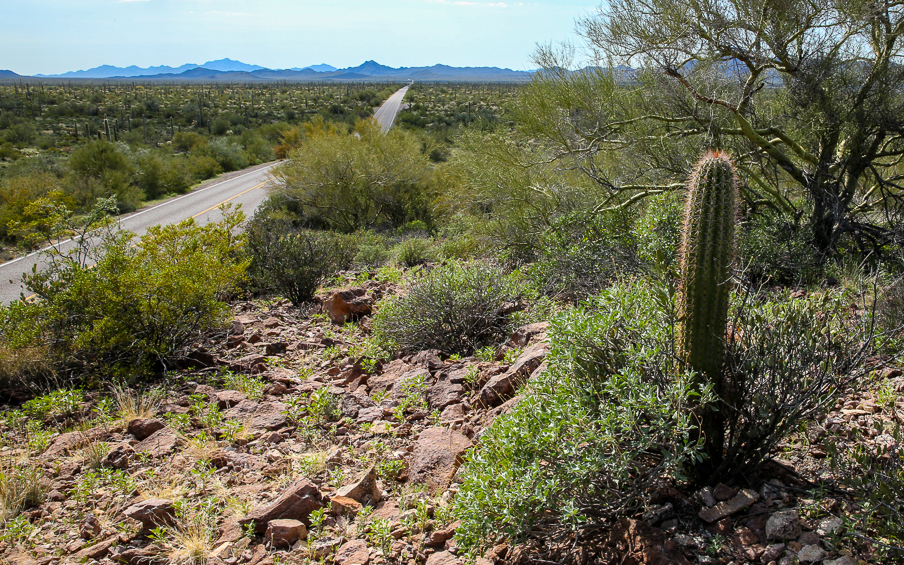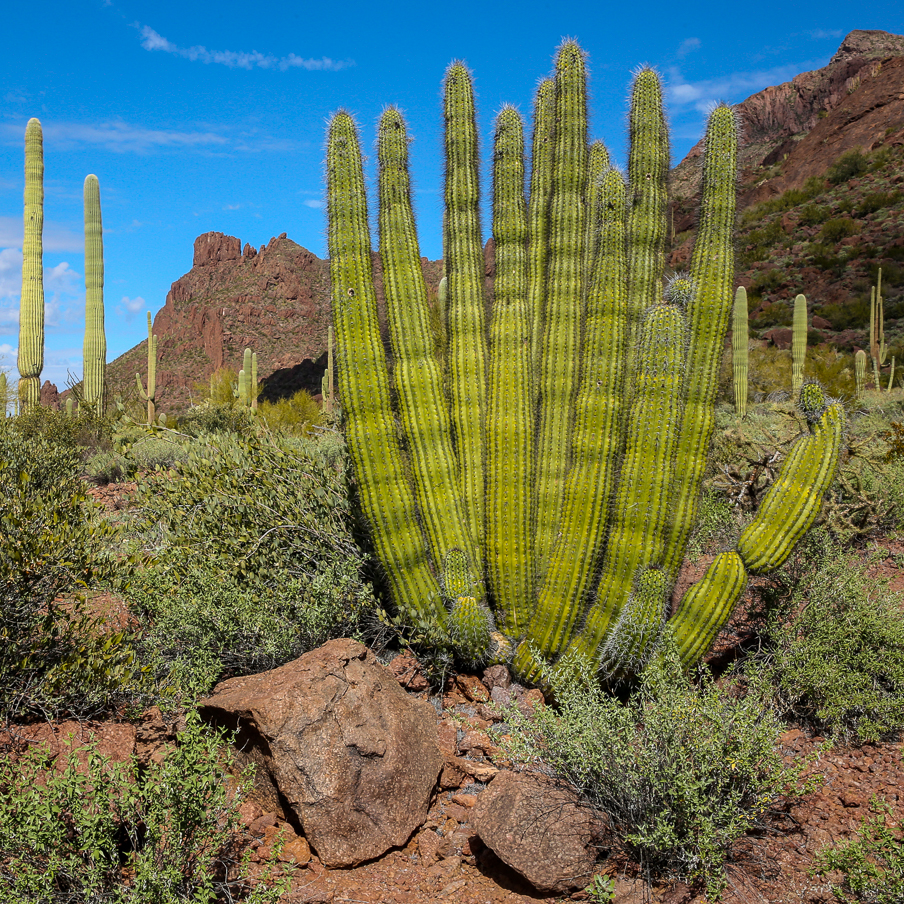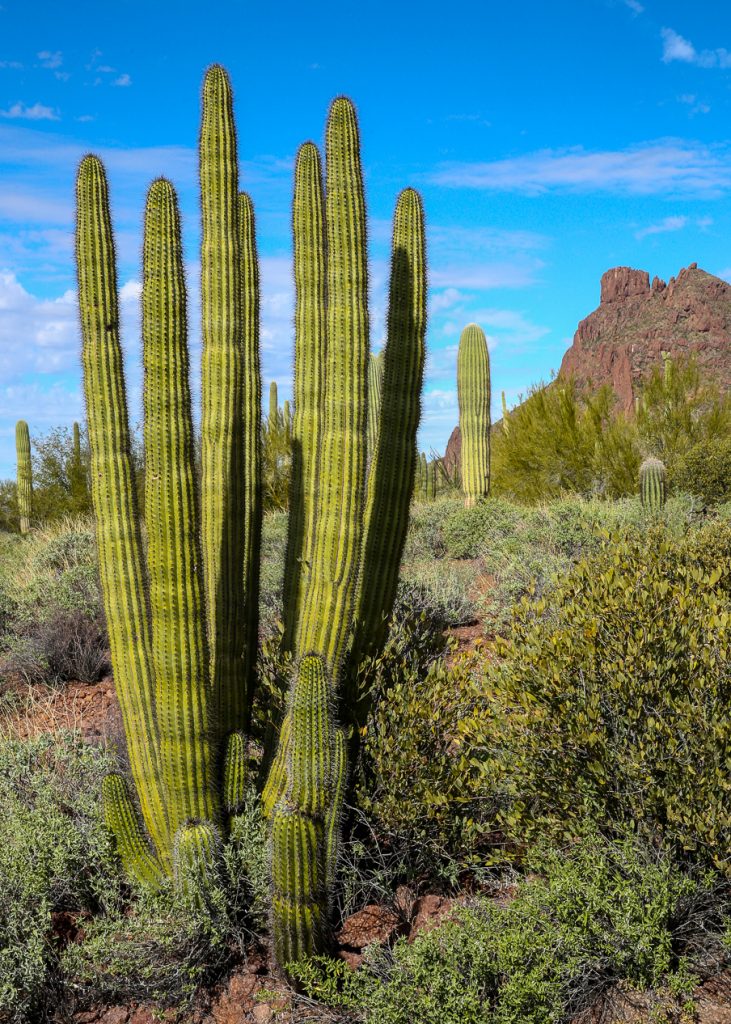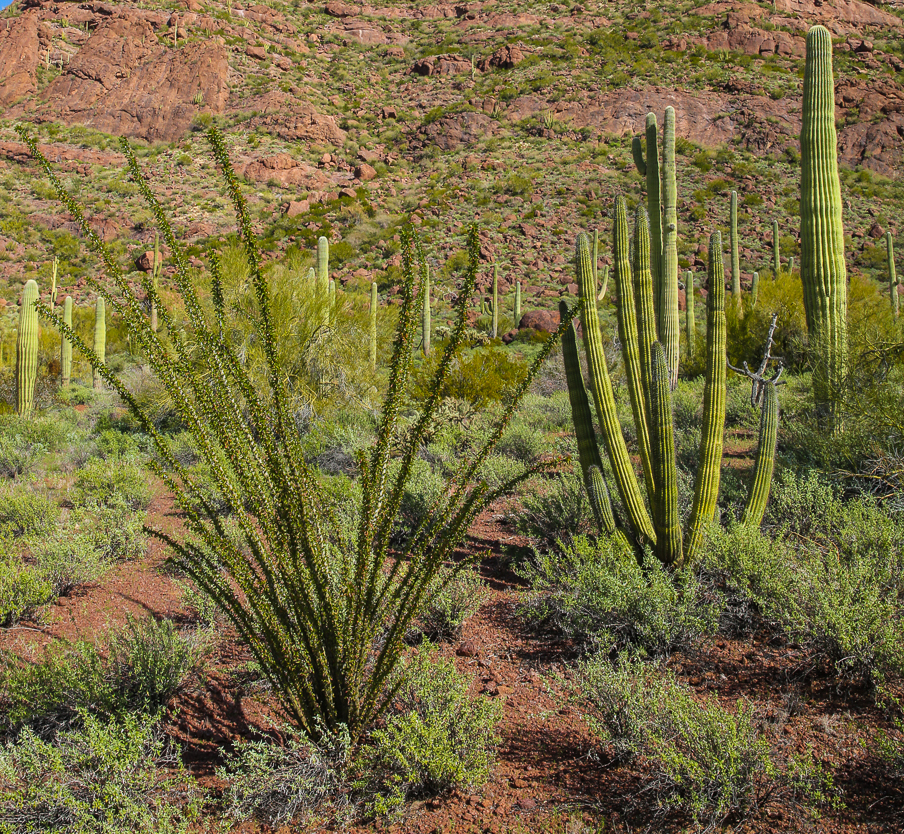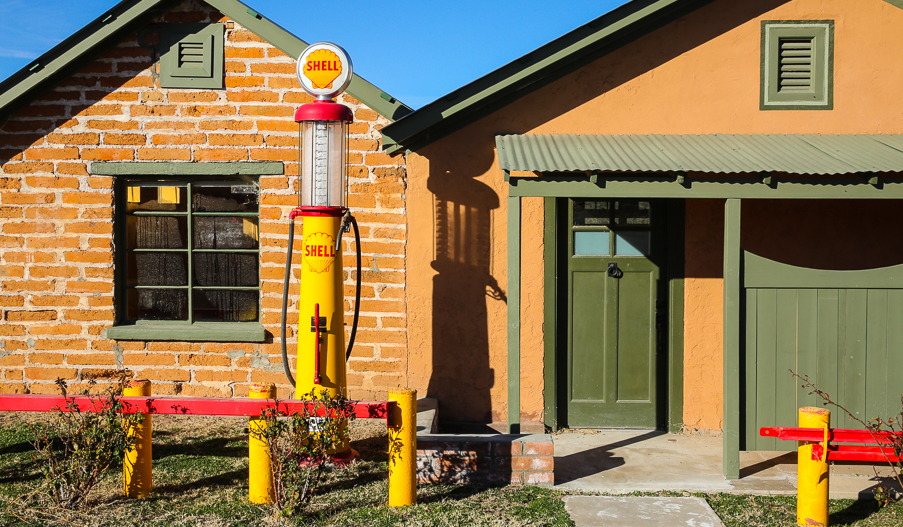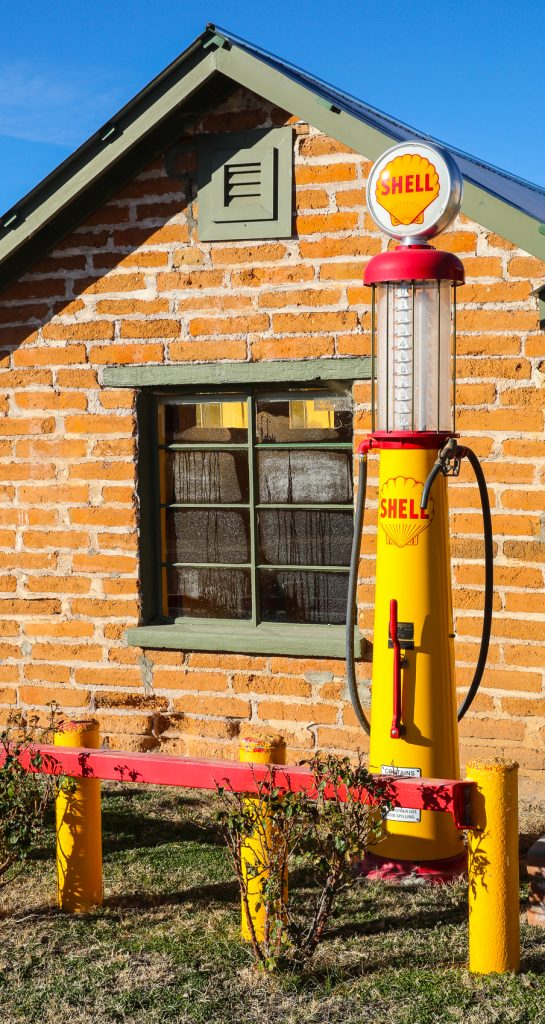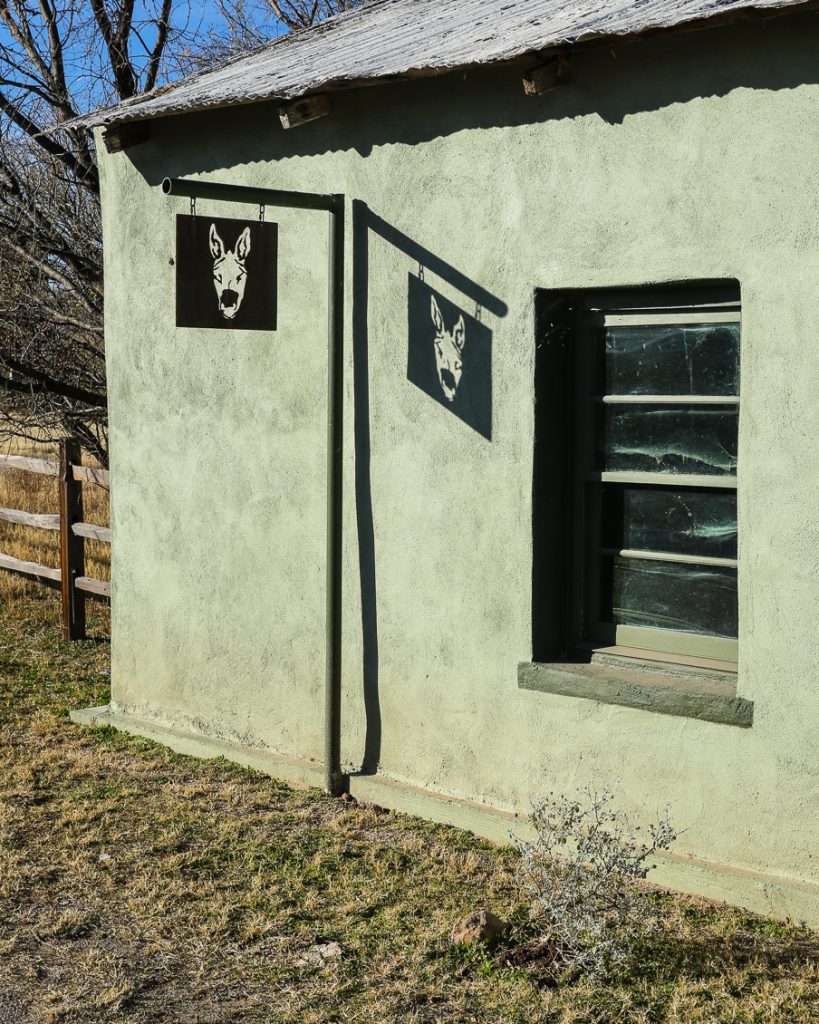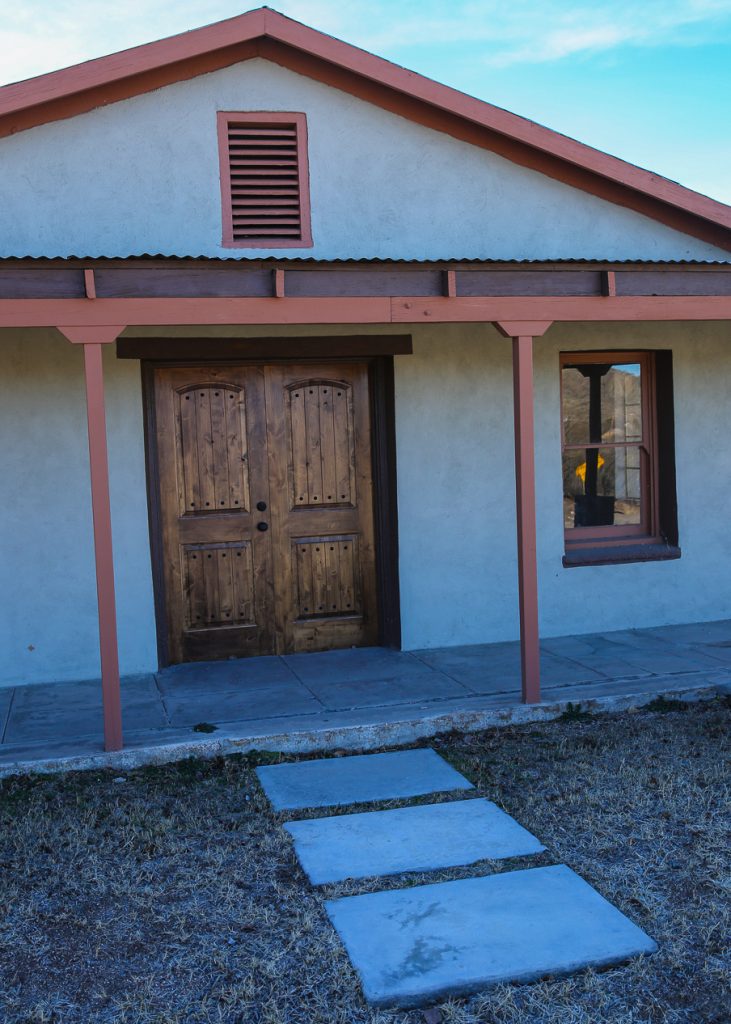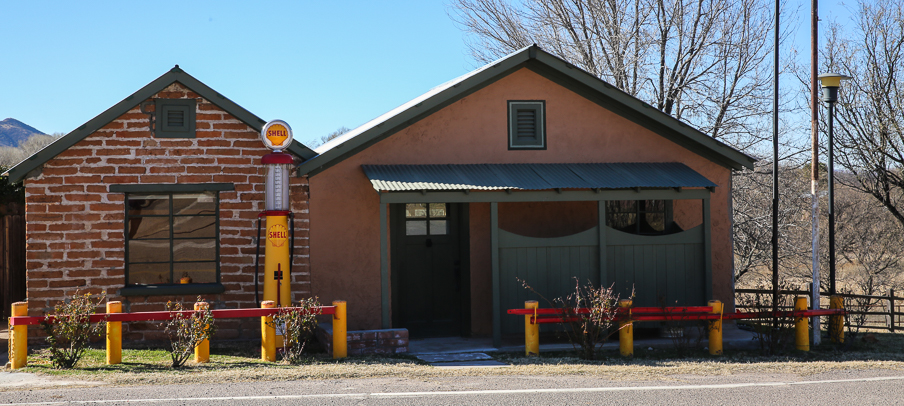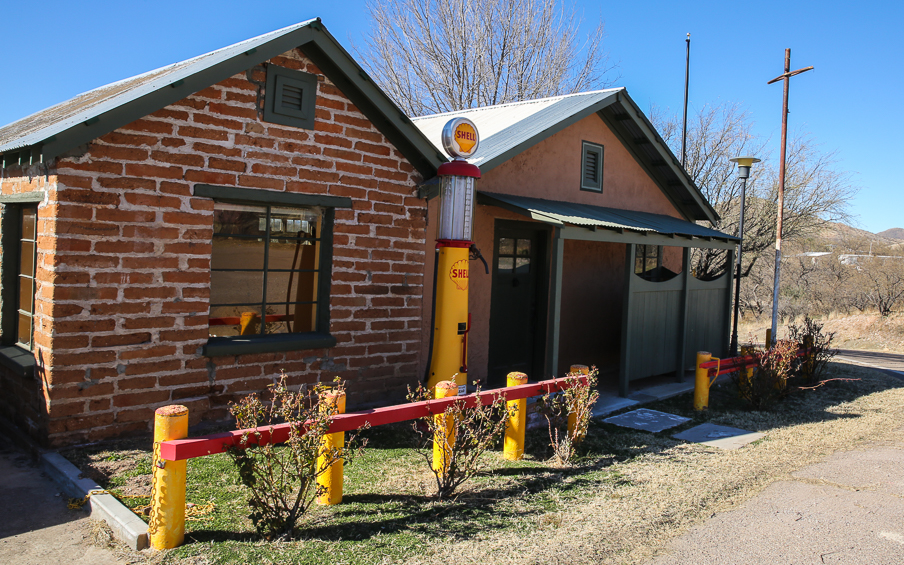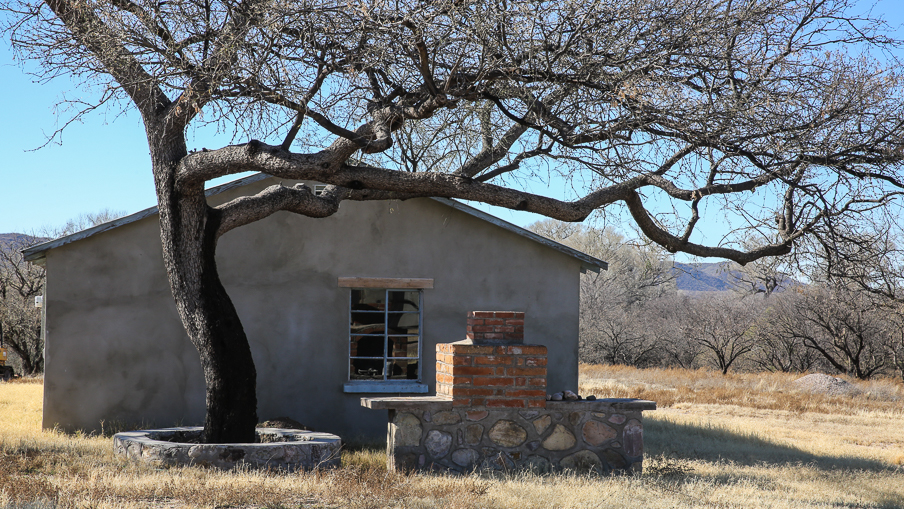Archive for
Organ Pipe Cactus National Monument
Warning: Use of undefined constant gad_content_tag_filter_replace - assumed 'gad_content_tag_filter_replace' (this will throw an Error in a future version of PHP) in /home/dx87kwtjkt0i/public_html/wp-content/plugins/web-ninja-google-analytics/webninja_ga.php on line 1813
Organ Pipe Cactus National Monument
~~~
Into the Mystic … Travel Blog Link
Mariachi Aztlan de Pueblo ~ Ajo, Arizona
Warning: Use of undefined constant gad_content_tag_filter_replace - assumed 'gad_content_tag_filter_replace' (this will throw an Error in a future version of PHP) in /home/dx87kwtjkt0i/public_html/wp-content/plugins/web-ninja-google-analytics/webninja_ga.php on line 1813
Mariachi Aztlan de Pueblo Plays Ajo, Arizona
Mariachi Aztlan de Pueblo ~ Ajo, Arizona
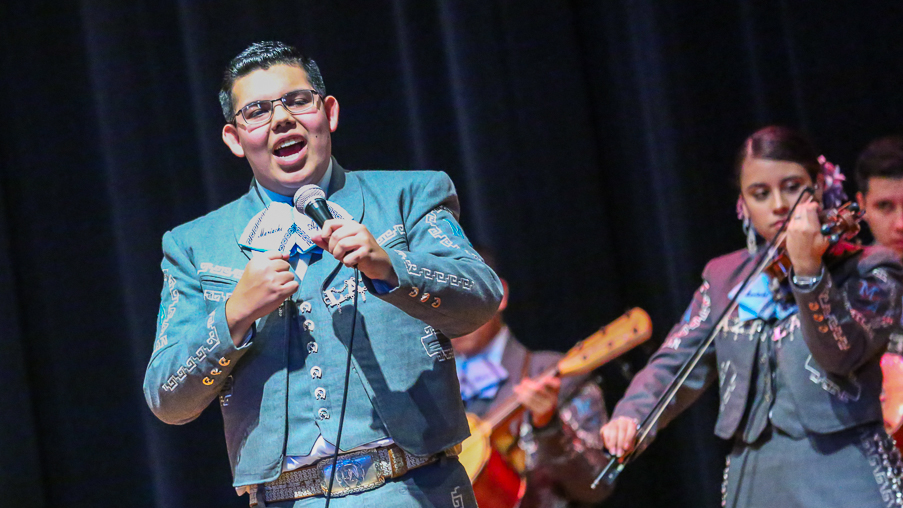
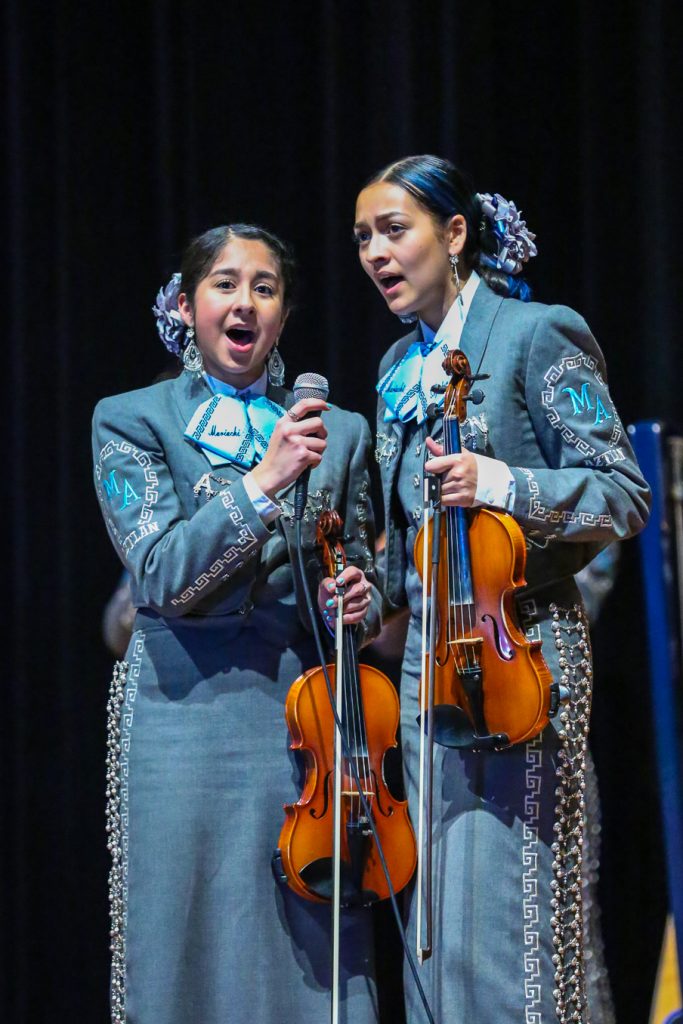
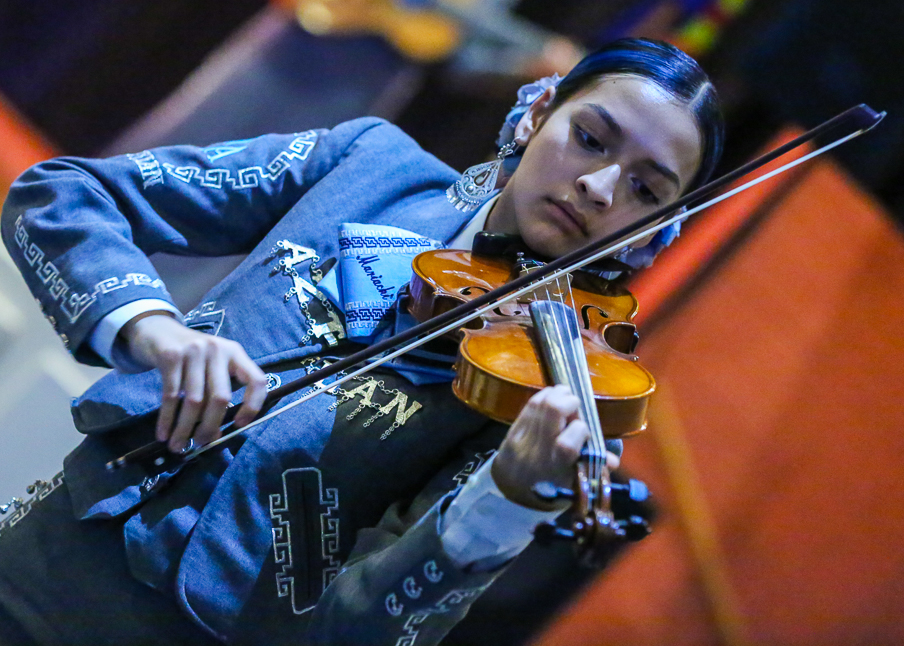
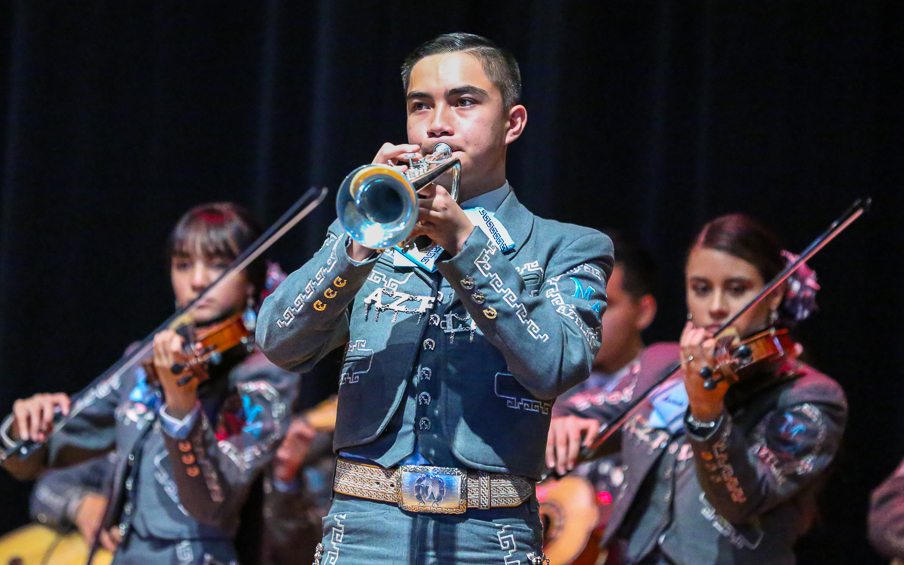
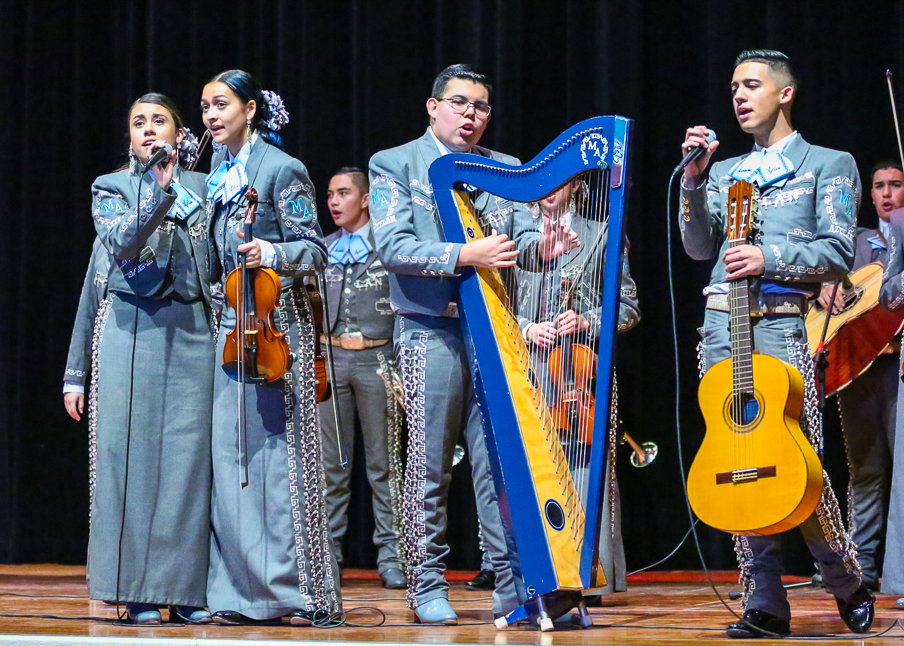
Digital Images ~ Expanded Gallery
Mariachi Aztlan de Pueblo ~ Ajo, Arizona
Ajo, Arizona
Warning: Use of undefined constant gad_content_tag_filter_replace - assumed 'gad_content_tag_filter_replace' (this will throw an Error in a future version of PHP) in /home/dx87kwtjkt0i/public_html/wp-content/plugins/web-ninja-google-analytics/webninja_ga.php on line 1813
Ajo, Arizona:
The Town That Paternal Copper Built and the ISDA & the Three Nations Have Renewed
Ajo, Arizona Is the Story of a Better America

Before the community of Ajo was settled, the Tohono O’odham used water from a series of potholes in the area they called Mu’i Wawhia or Moivavi (many wells). Mexican miners later called the site Ajo, perhaps influenced by another O’odham name for the area –-au-auho—for the pigment they obtained from the ore-rich rocks.
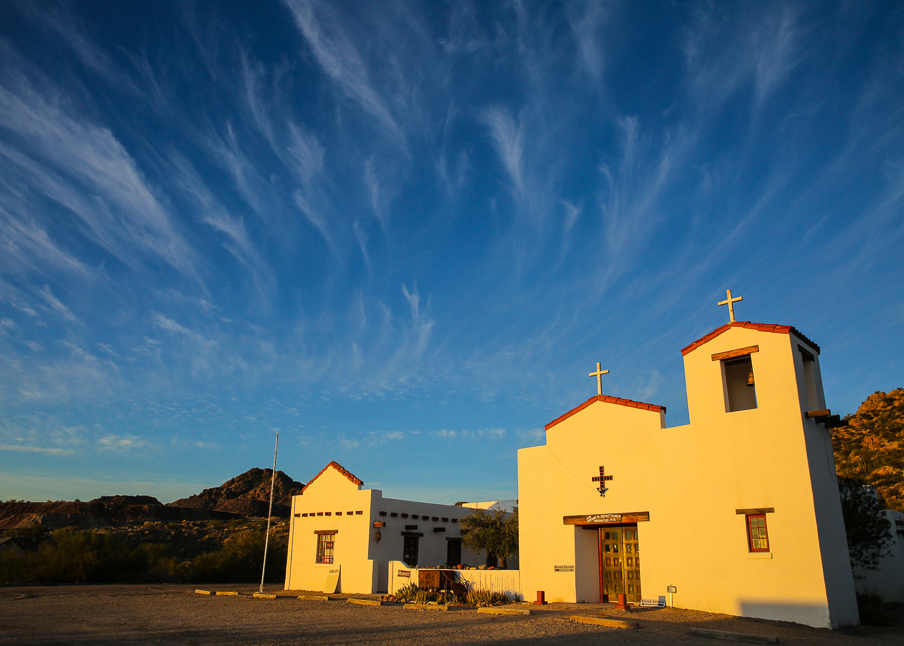
On the way to silver mines near Magdalena, Sonora, Tom Childs, Sr. and his party chanced upon the Ajo area in 1847 and stopped to mine the ore they found. Soon the Arizona Mining & Trading Company, formed by Peter M. Brady, a friend of Childs, worked the rich surface ores, shipping loads around Cape Horn smelting in Swansea, Wales, in the mid 1850s. The mine closed when a ship sank off coast of Patagonia. Childs and other prospectors worked claims here; long supply lines and the lack of water discouraged large mining companies. Tom Childs, Jr. remained in the Ajo area and become merchant.

A wily promoter, A.J. Shotwell, enticed John Boddie of Missouri to help set up the St. Louis Copper Company in 1890s. Shotwell organized the rescue Copper Company when bankruptcy threatened. This became the Cornelia, then the New Cornelia, named after Boddie’s first wife.

“Professor” F.L McGahan and Shotwell introduced the so-called vacuum smelter that supposedly channeled each type of molten ore to different spigots and ran perpetually on the initial fuel. Mcgahan conveniently slipped away from the demonstration model in Los Angeles –it exploded when been tested.

The first to develop the Ajo area profitable was John Campbell Greenway, a Rough Rider and a star Yale athlete. He became general manager of the Calumet and the Arizona Mining Company. Dr. L.D. Ricketts and Greenway developed a leaching method to process the carbonate ore overburden. Greenway also located the well that still provides water to Ajo and directed the construction of the Plaza, the community’s focal point. Calumet and Phelps Dodge merged in 1931 and the mine became the new Cornelia Branch of Phelps Dodge, managed by Michael Curley.

The local newspaper, the Ajo Copper News, published its first issue April 29, 1916. With over 90 years of history, it is one of a few businesses still in operation from the early days of the community, although it has changed locations several times. Its inception was at the urging of Greenway and Curley.
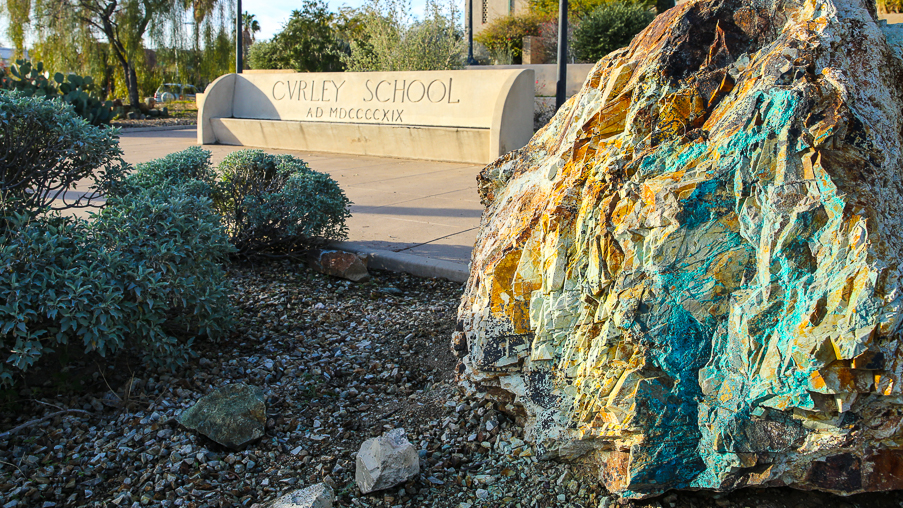
Ajo continued as the quintessential southwestern mining town, with occasional strikes and shutdowns, until 1983. The strike that began in July that year crippled the community with acrimony on both sides. Though the mine struggled on with non-union labor, copper prices plummeted and so did Ajo. Mining stopped in 1985. PD remained a presence in the community but sold much of its holdings, including the Plaza and the company housing. The remaining mines property is now owned by Freeport-McMoran Gold and Silver, Inc., which merged with Phelps Dodge in 2007.
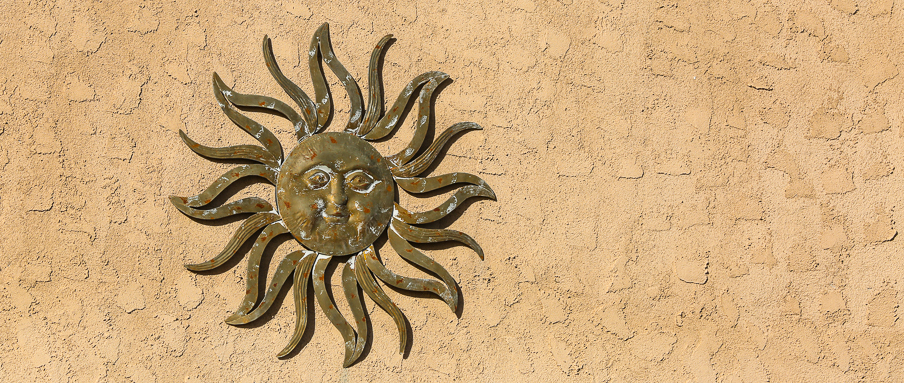
Many retired people bought the houses and started a new era in Ajo‘s history and, more recently, changes have come about with the influx of Border Patrol Agents.
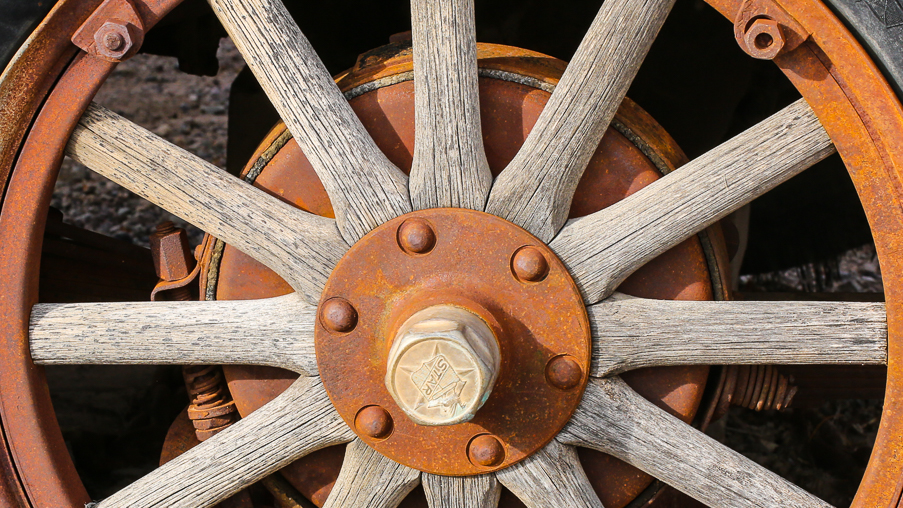
The acquisition of the old Curley School and the plaza by the International Sonoran Desert Alliance has both preserved and altered the flavor of the community, which is home to many churches, fraternal groups, and social and cultural organizations with long and rich histories of their own.
© Ajo Copper News, used with permission.
Digital Image Gallery Link ~ Ajo, AZ Architecture
SOURCES
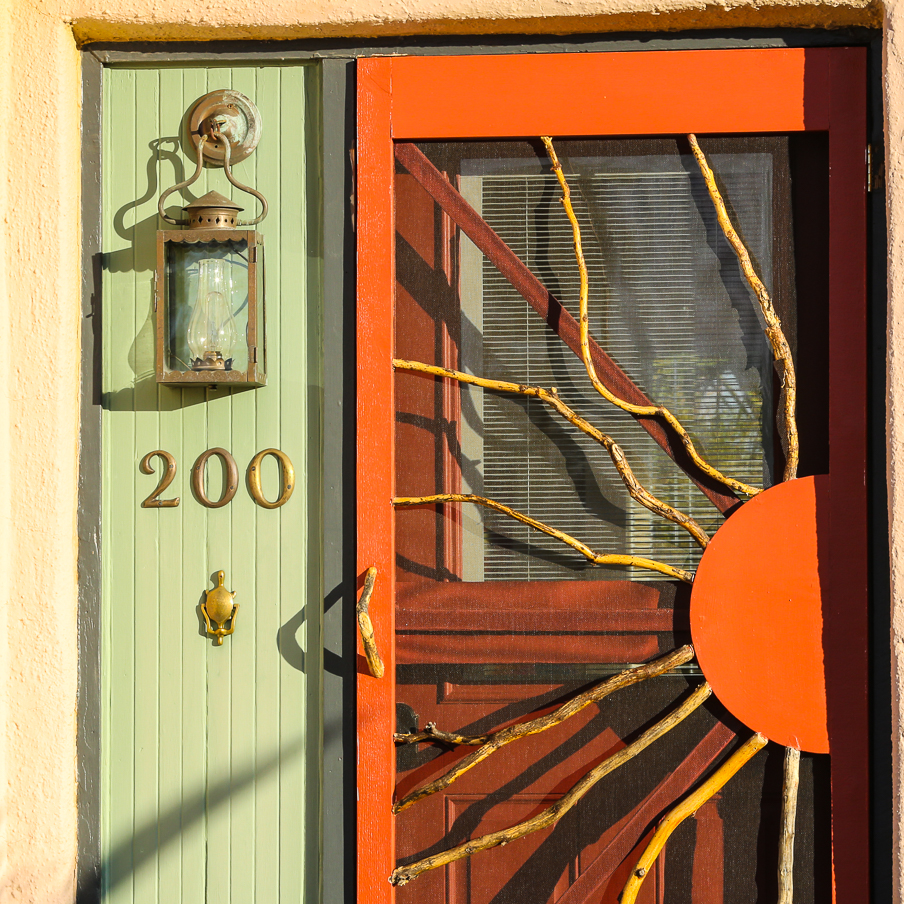
http://www.cunews.info/ajohistory.html
http://www.cunews.info/childs.html
http://www.cunews.info/greenway.html
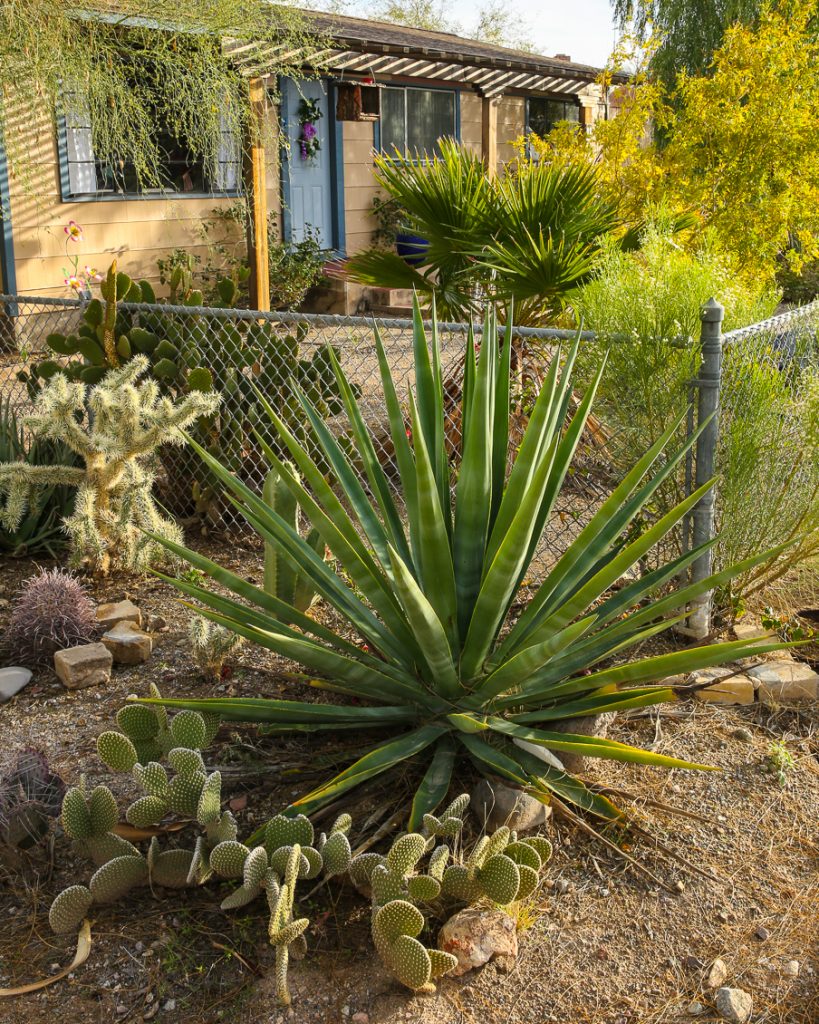
https://winfirst.wixsite.com/arizonamininghistory/history

https://www.theatlantic.com/national/archive/2015/04/a-word-cloud-of-ajo-arizona/391901/

https://www.theatlantic.com/national/archive/2015/04/ajo-oasis-in-the-desert/389051/
https://www.theatlantic.com/notes/2017/01/the-end-of-the-journey/513518/
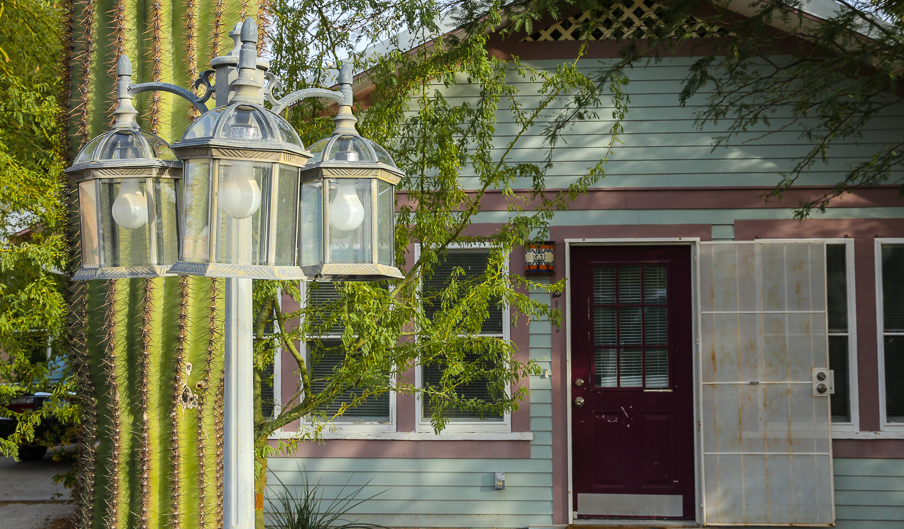
https://www.arts.gov/exploring-our-town/ajo-masterplan
https://www.cnn.com/2019/12/06/opinions/small-town-ajo-arizona-heal-divide-fallows/index.html
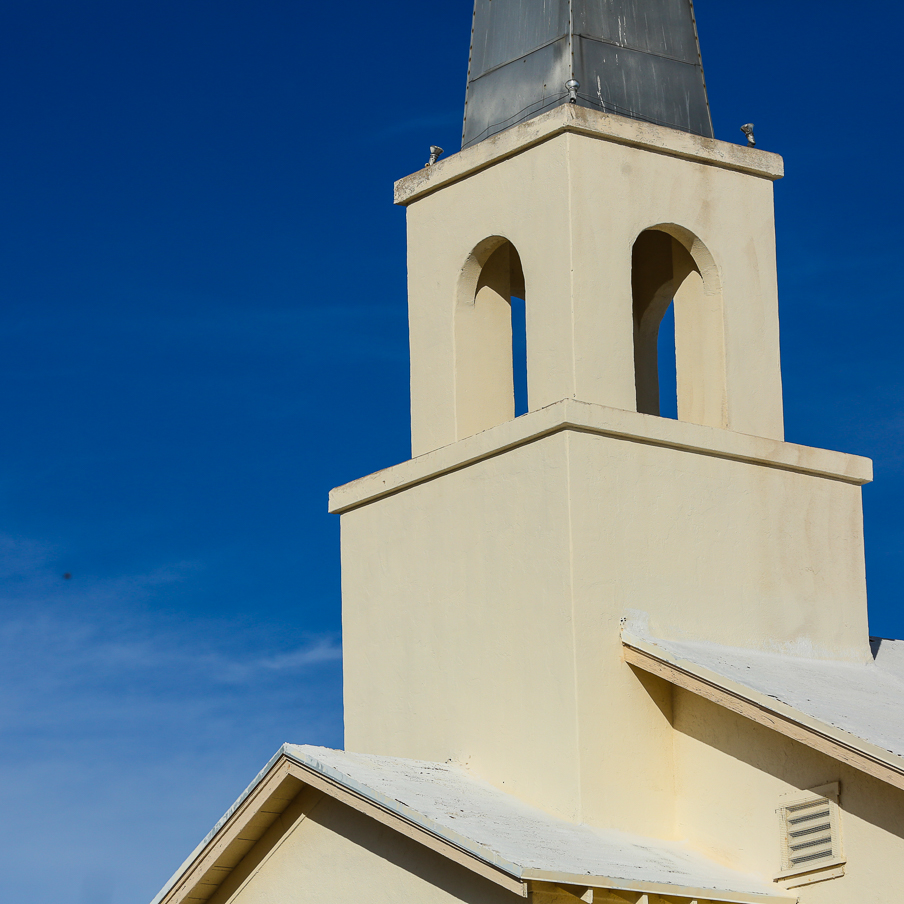
Digital Image Gallery Link ~ Ajo, AZ Architecture
The Road to Apache Pass
Warning: Use of undefined constant gad_content_tag_filter_replace - assumed 'gad_content_tag_filter_replace' (this will throw an Error in a future version of PHP) in /home/dx87kwtjkt0i/public_html/wp-content/plugins/web-ninja-google-analytics/webninja_ga.php on line 1813
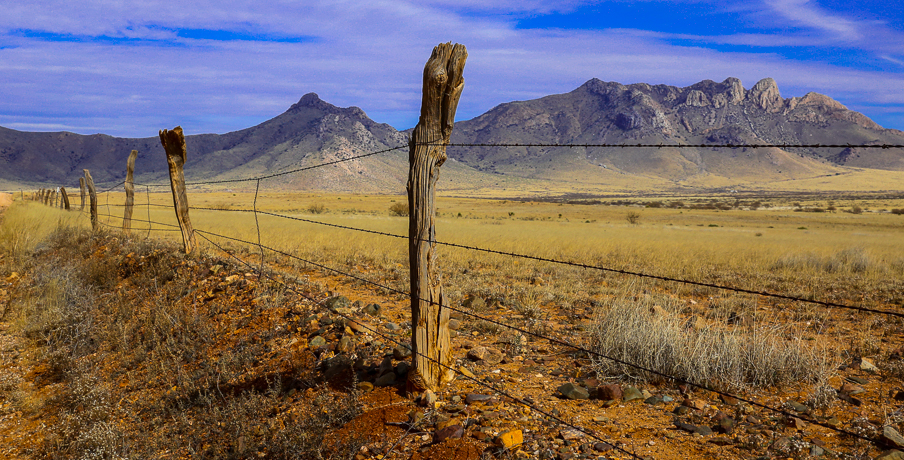

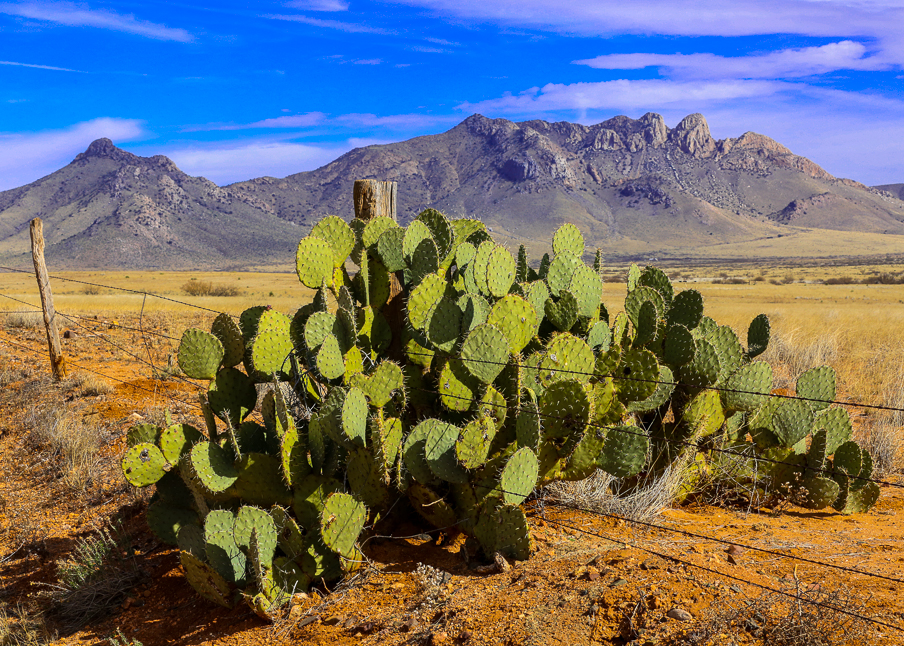
Expanded Image Gallery Link ~ The Road to Apache Pass
Wings Over Willcox 2020
Warning: Use of undefined constant gad_content_tag_filter_replace - assumed 'gad_content_tag_filter_replace' (this will throw an Error in a future version of PHP) in /home/dx87kwtjkt0i/public_html/wp-content/plugins/web-ninja-google-analytics/webninja_ga.php on line 1813
Great community event:
A volunteer driven small birding festival on the rebound and recovery after a number of years of mismanagement.
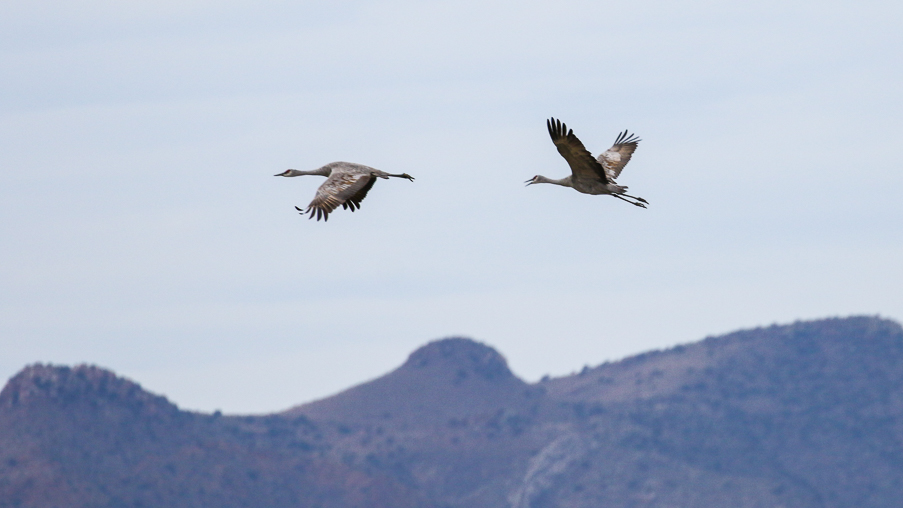


Kudos to the volunteers, kudos to the local drivers, kudos to the guides.
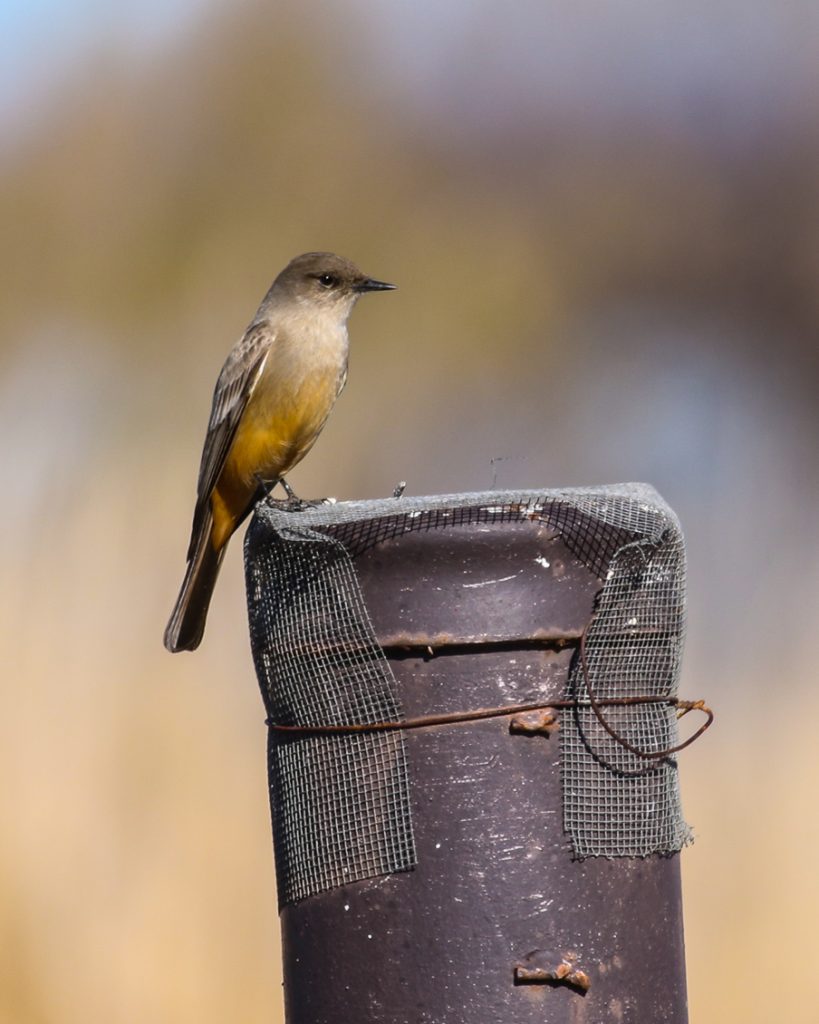

A tip of the hat and acknowledgement to Homer Hansen.

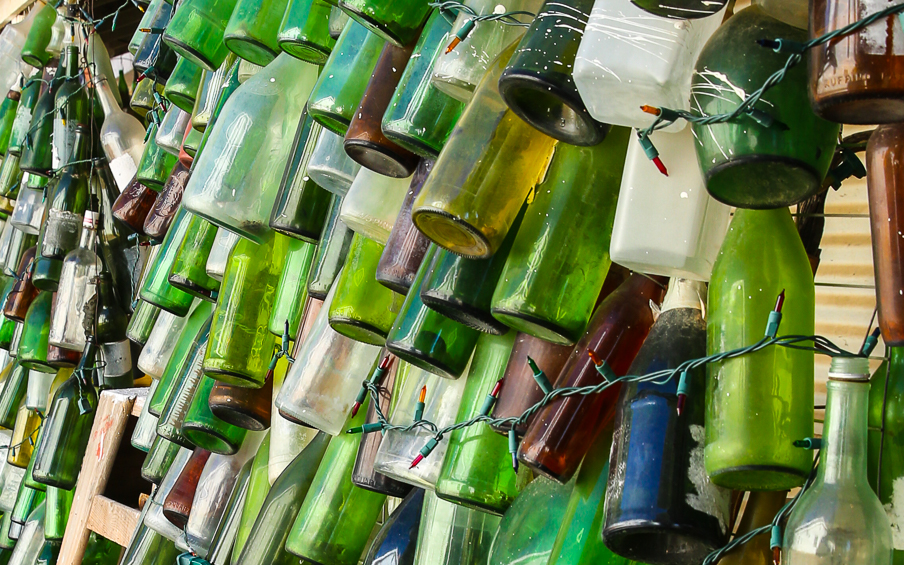
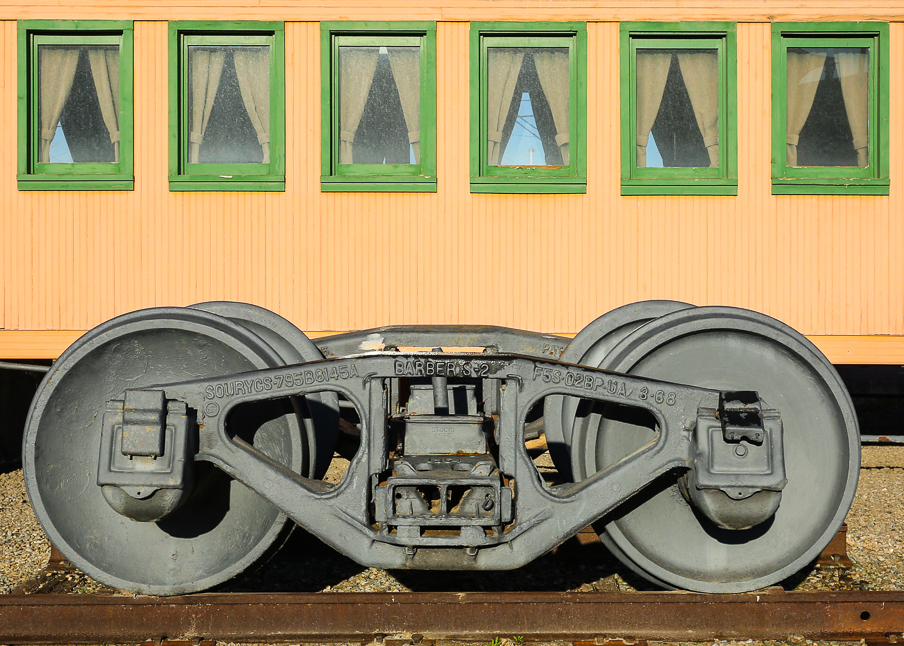
Thank you & welcome back.
Tumacacori Ruins
Warning: Use of undefined constant gad_content_tag_filter_replace - assumed 'gad_content_tag_filter_replace' (this will throw an Error in a future version of PHP) in /home/dx87kwtjkt0i/public_html/wp-content/plugins/web-ninja-google-analytics/webninja_ga.php on line 1813
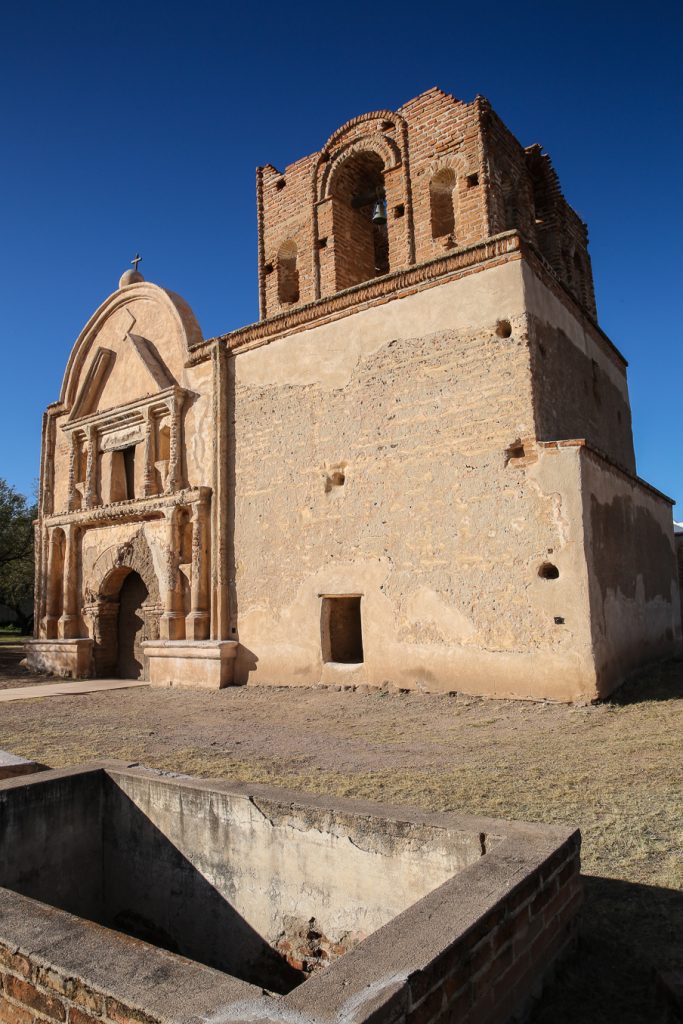
1691
Tohono O’odham invite Father Eusebio Francisco Kino, a black-robed Jesuit priest, to Tucamacori.
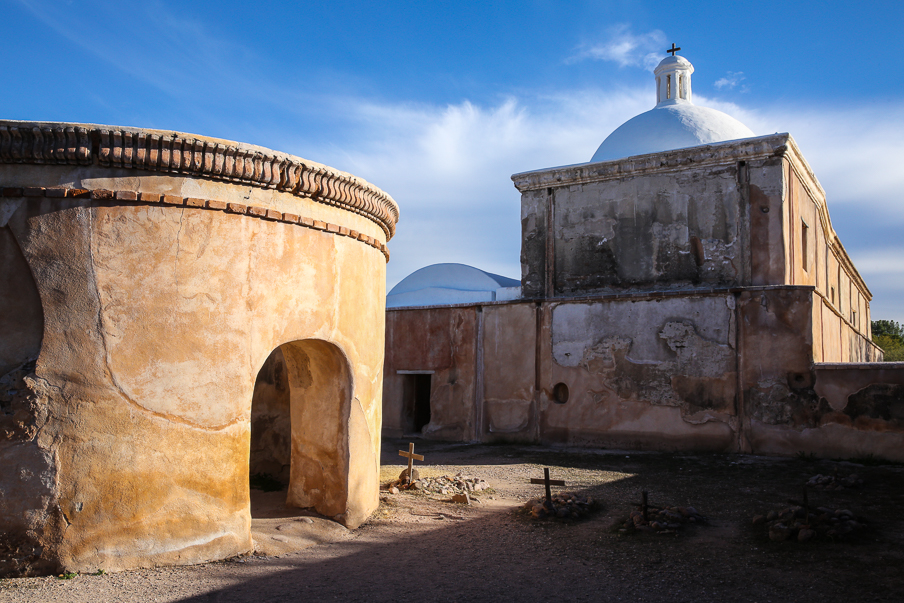
1751 – 1753
O’odham factions rebel against Spain, which builds a presidio (military post) at Tubac to defend it’s interests.

1757
Jesuits oversee the raising of an adobe church at Tumacacori, a visita (mission without a resident priest).
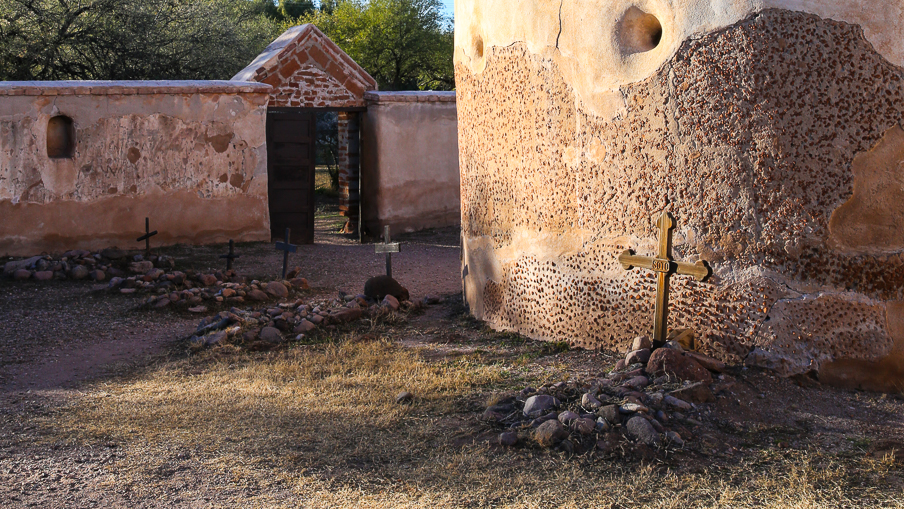
1767 – 1768
Jesuits are expelled from New Spain.
Tumacacori becomes cabecera (headquarters) for the gray-robed Franciscans.

1800 – 1820
Foundations are laid for a new church.
Progress is intermittent.
Cattle are sold to pay for the completion of the church.
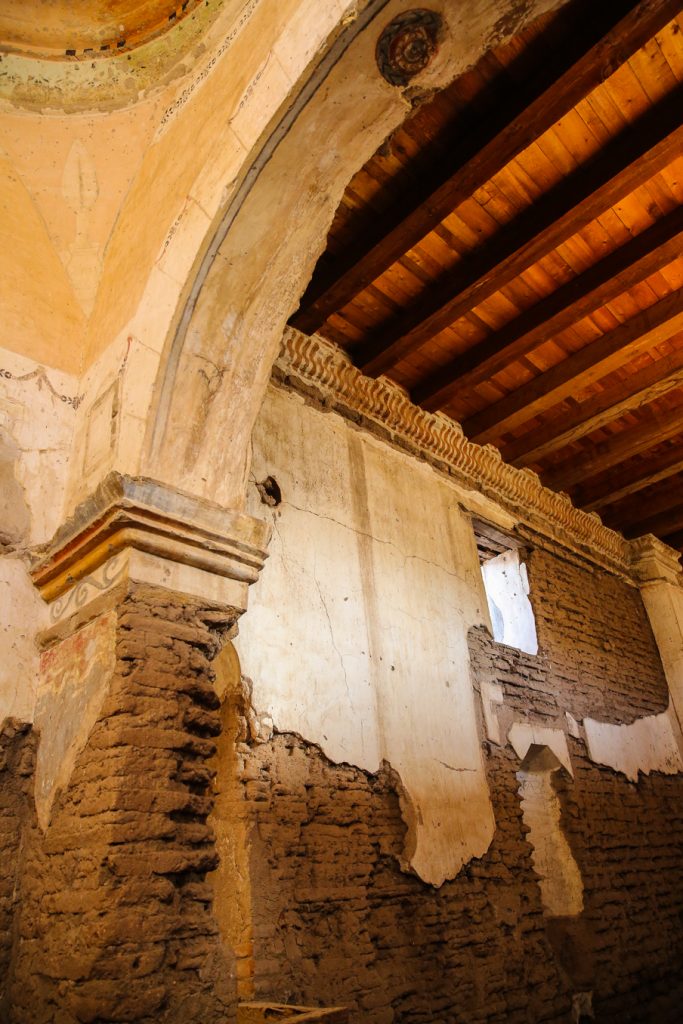
1821 – 1824
Upper walls, roof, sanctuary dome and baptistry completed.
The church is dedicated for use.
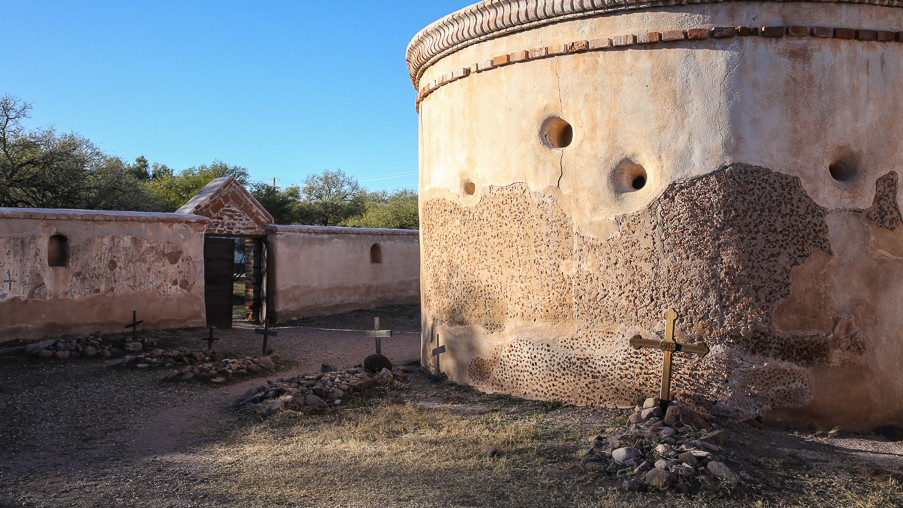
1821 – 1828
Mexico achieves independence in 1821; expels all Spanish-born residents, including Tumacacori’s priest in 1828.
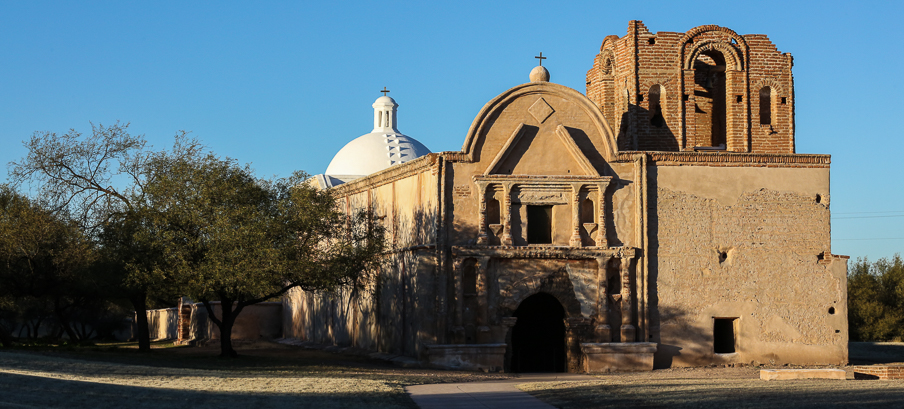
1848 – 1856
US-Mexican War ends.
The O’odham leave Tumacacori.
The Tubac presidio is abandoned in 1856.
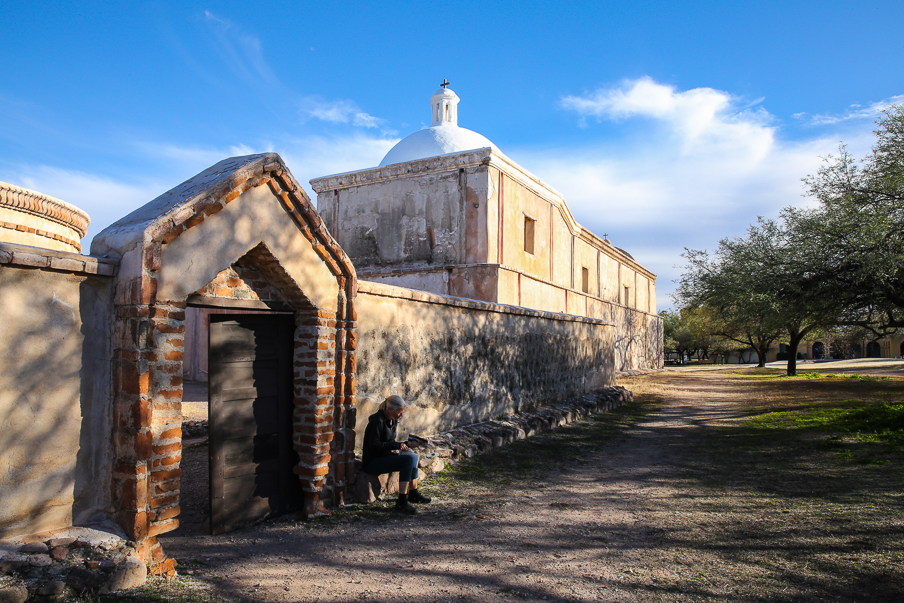
Sources
Public Pamphlet, 01/2020 ~ Tumacacori National Historical Park, Arizona ~ National Park Service, US Department of the Interior
Arivaca, Arizona
Warning: Use of undefined constant gad_content_tag_filter_replace - assumed 'gad_content_tag_filter_replace' (this will throw an Error in a future version of PHP) in /home/dx87kwtjkt0i/public_html/wp-content/plugins/web-ninja-google-analytics/webninja_ga.php on line 1813
The corners of South Ruby Road, South Pusch Street and West Arivaca Road Arivaca, Arizona.
Intriquing corner of the Gadsden Purchase.
Paul Bond Boots
Warning: Use of undefined constant gad_content_tag_filter_replace - assumed 'gad_content_tag_filter_replace' (this will throw an Error in a future version of PHP) in /home/dx87kwtjkt0i/public_html/wp-content/plugins/web-ninja-google-analytics/webninja_ga.php on line 1813

Paul Bond Boots
Nogales, Arizona
With the namesake founding boot-maker Paul Bond being gone for a number of years people may wonder if the Paul Bond Boot of today is still the renowned Paul Bond Boot from back in the day.
The craftsmen presently involved in the making of a Paul Bond handmade hand-stitched cowboy boot still create with pride, hand work, hard work.
Most of these craftsmen were employed by and/or trained by Paul Bond back in the day.
Featured Craftsmen:
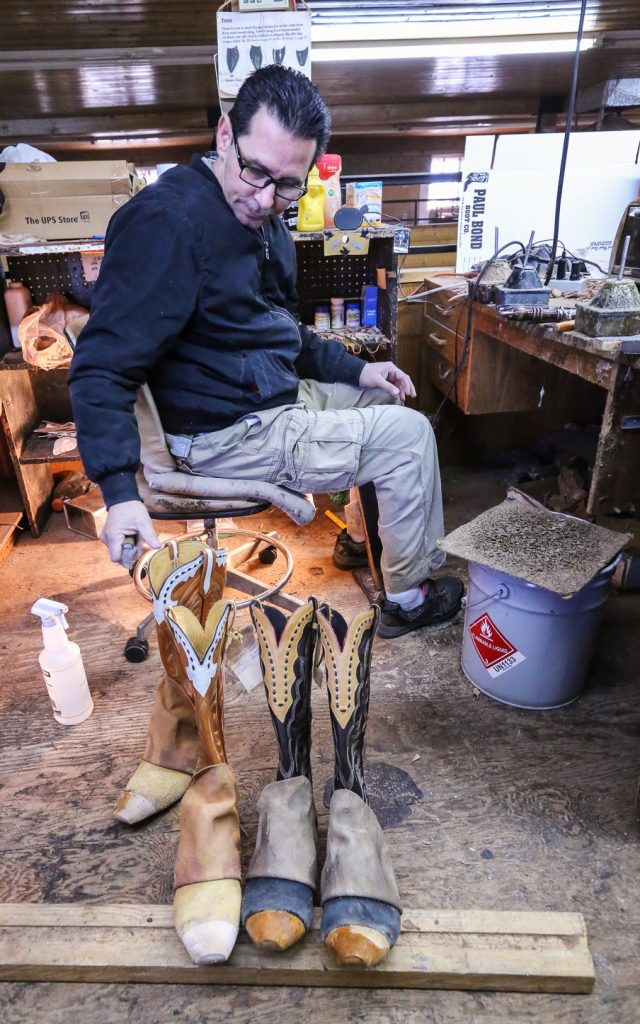
Juan Ariano
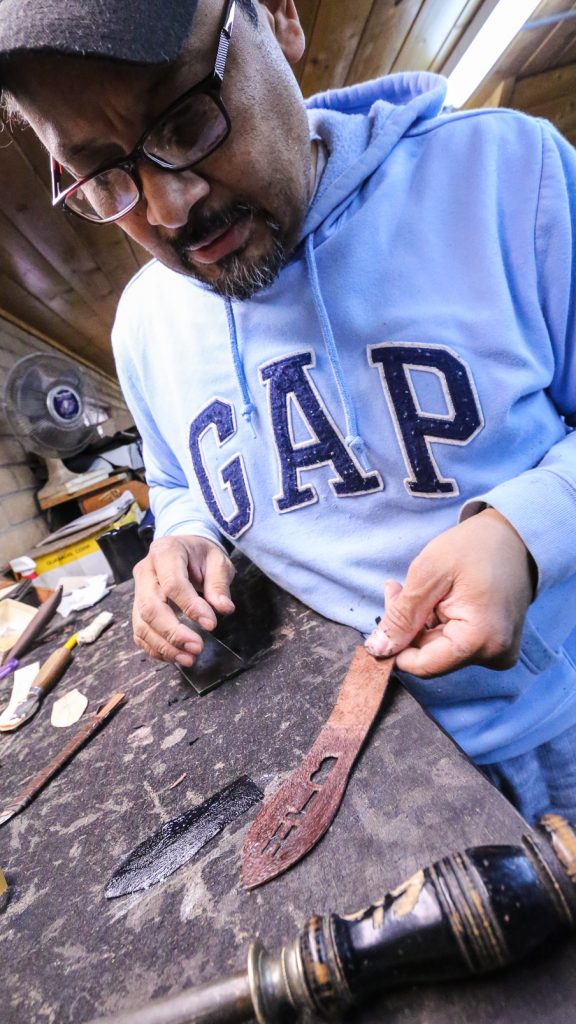
Giovanni Galeano
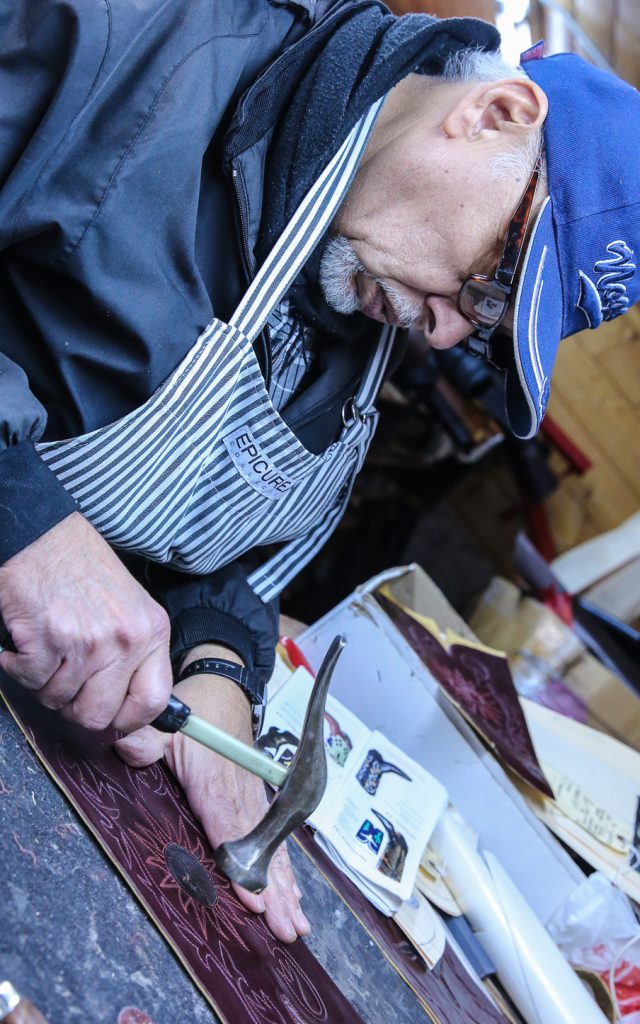
Eleazar Villalba
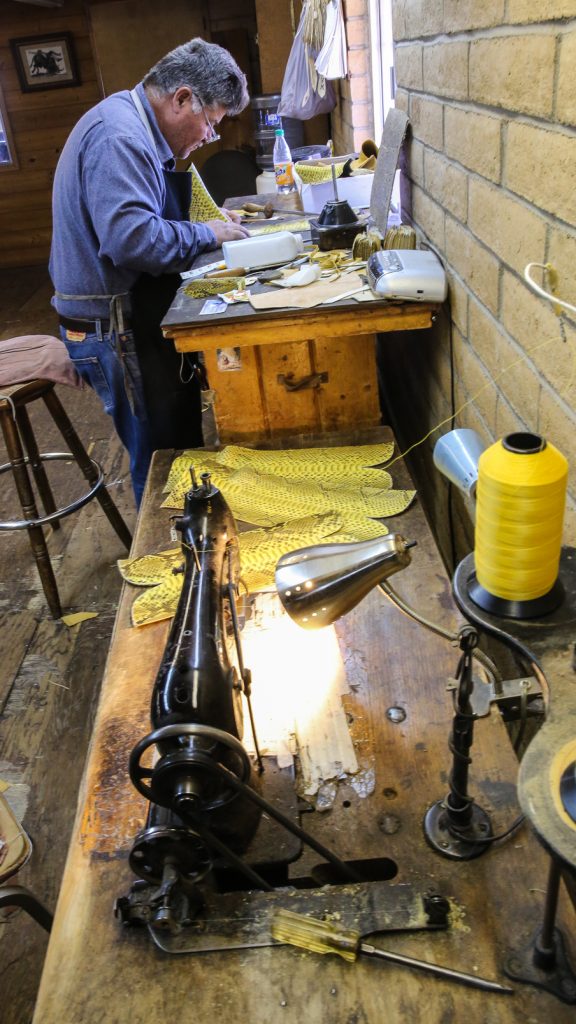
Jose Luis Ochoa
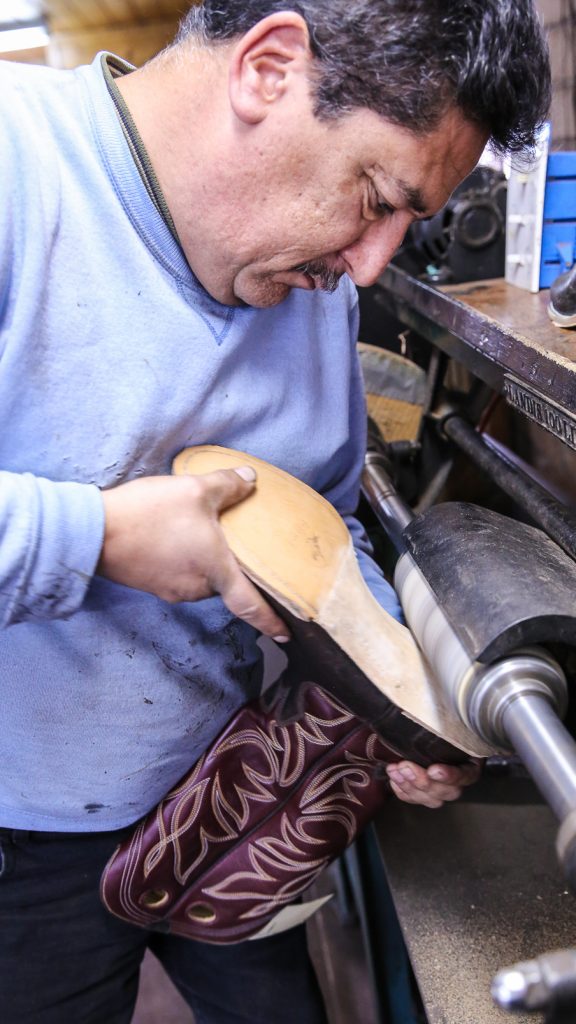
Jose Cedeno
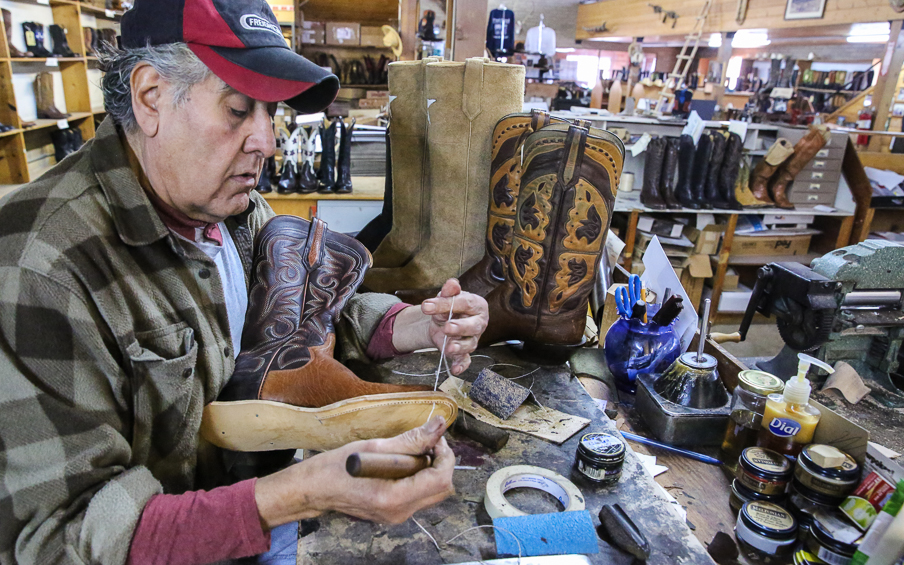
Fermin Haro
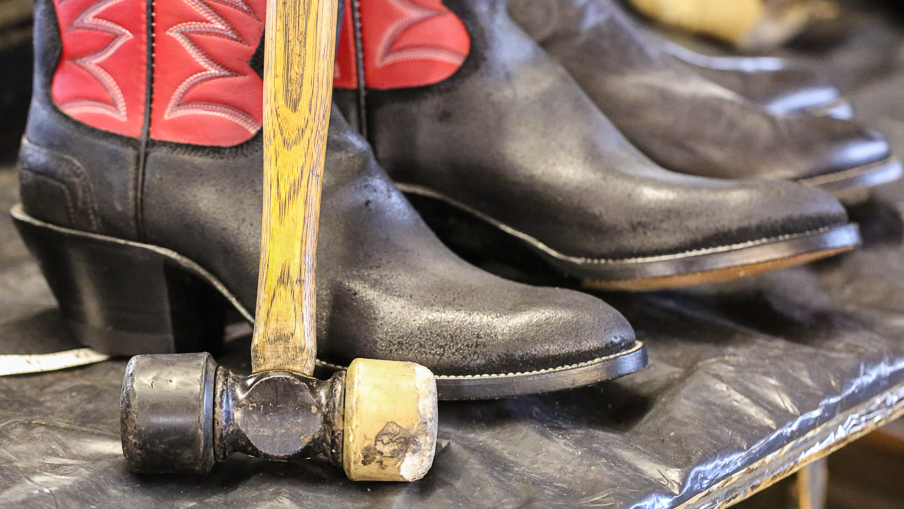
Expanded Image Gallery ~ Paul Bond Boots – Nogales, Arizona
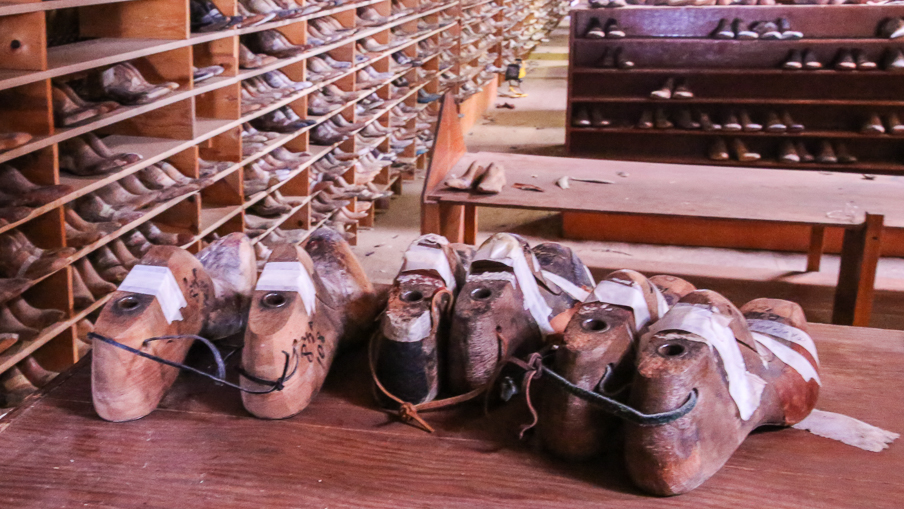
Detailed measurements and notations result in a yellow tag and a hand built last that the boot is built around.
The tag detailing all the custom requests and boot possibilities is tied to the boot and follows it throughout.

After the lasts have served their purpose and are removed from the finished boot they are retired to the third floor of the barn-like structure where all this boot building effort transpires.
Along with the lasts and the names and details notated, there are the stories.
Stories connected with the boots and the people for which the boots are destined.
Someone needs to put the stories on paper.
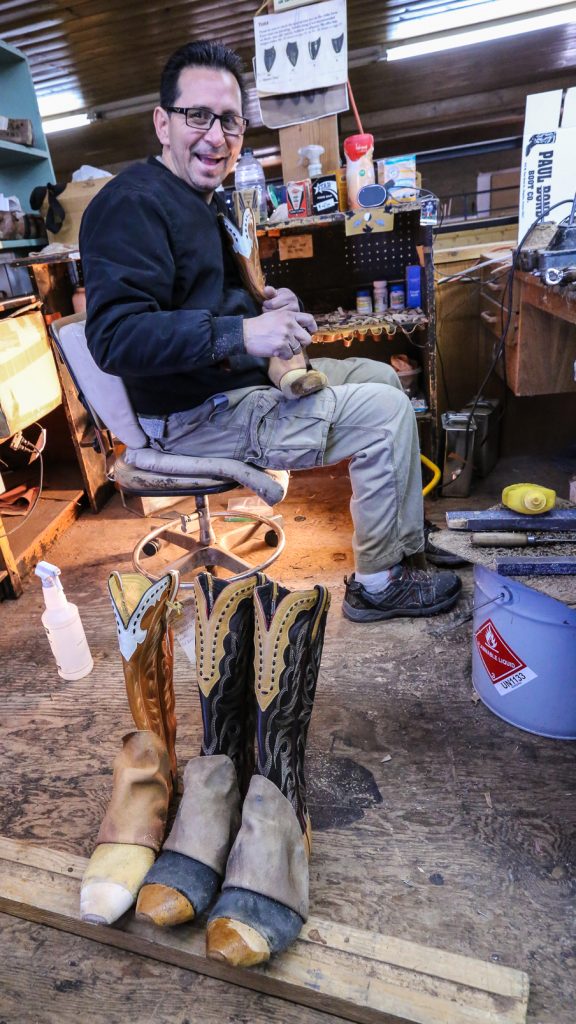
Juan Ariano can take the measurements and build the lasts.
I caught him shaping, sanding, moistening, stretching, soft gluing, forming, cutting, trimming and nailing: making the toe of the boot.
Nine years ago Mr. Bond taught Juan Ariano how to make the boot.
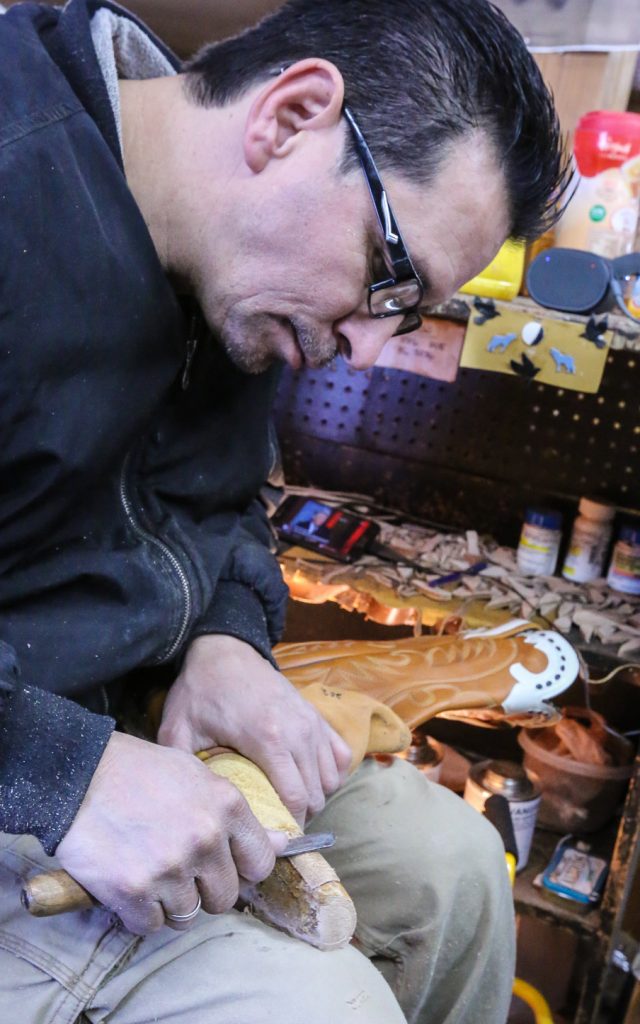
Sharp knives, sharp edges.
Tools are constantly sharpened.
As is the eye.
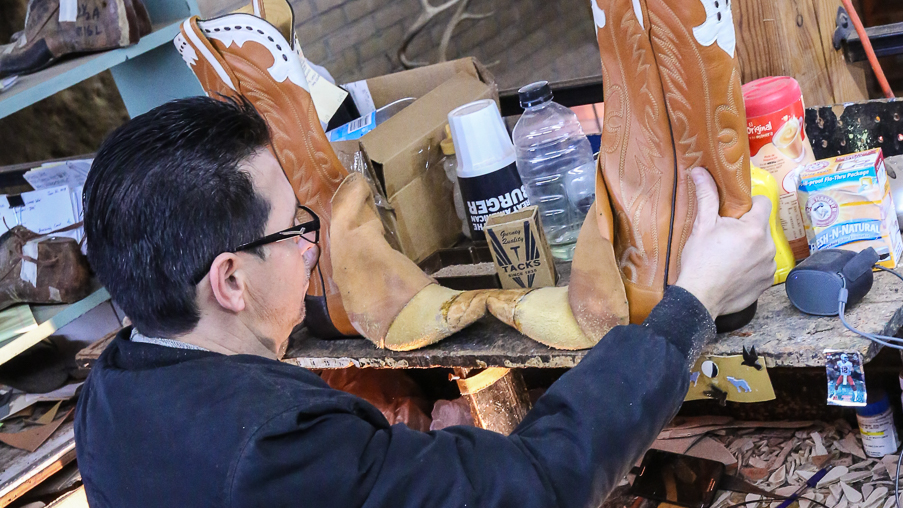
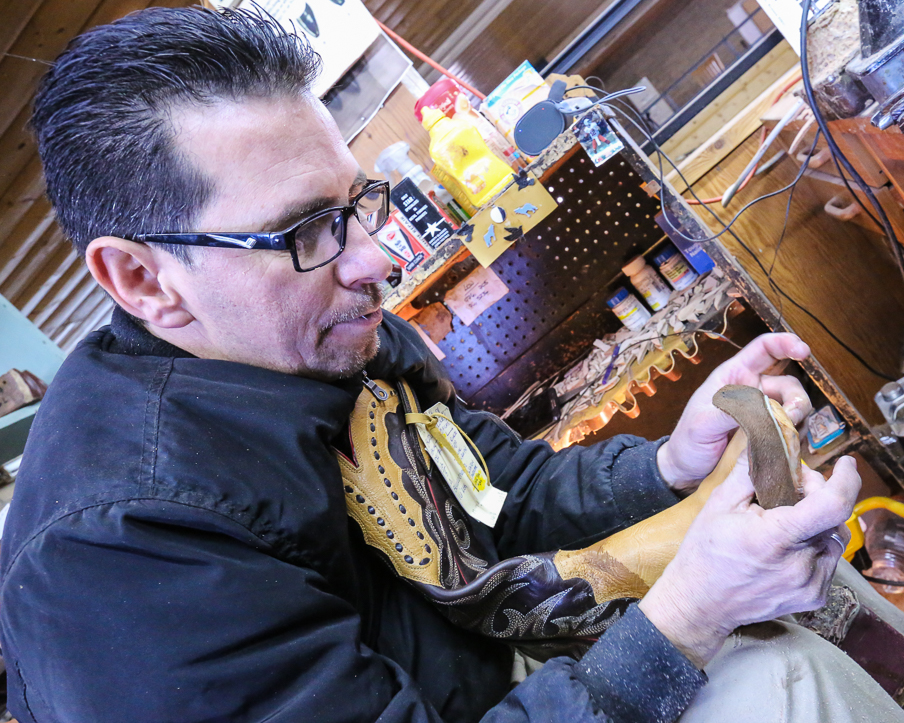
Eight types of formed leather toes.
Toe stitching available as well.
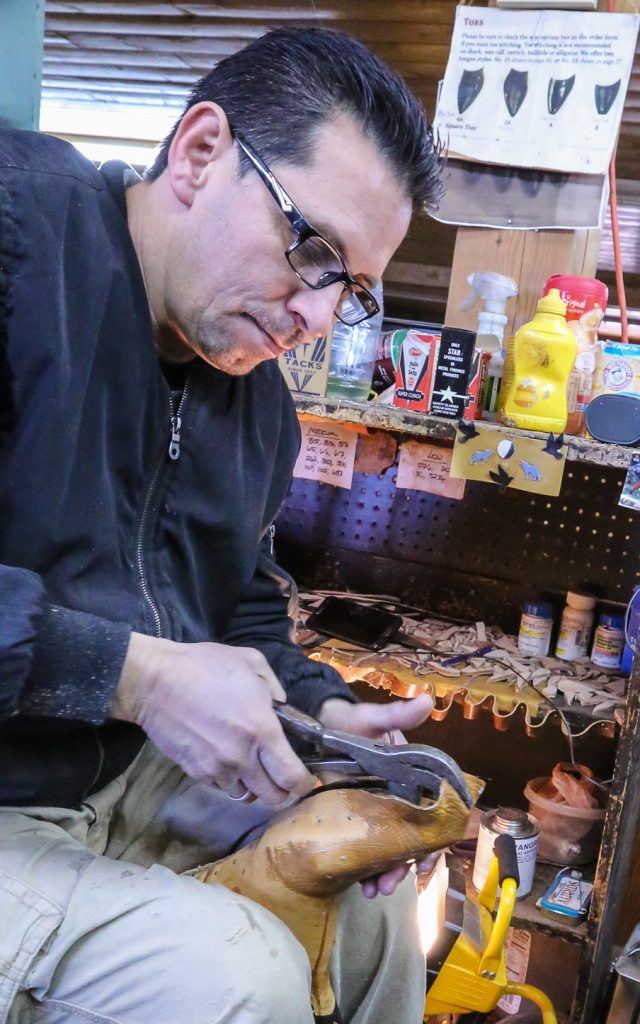
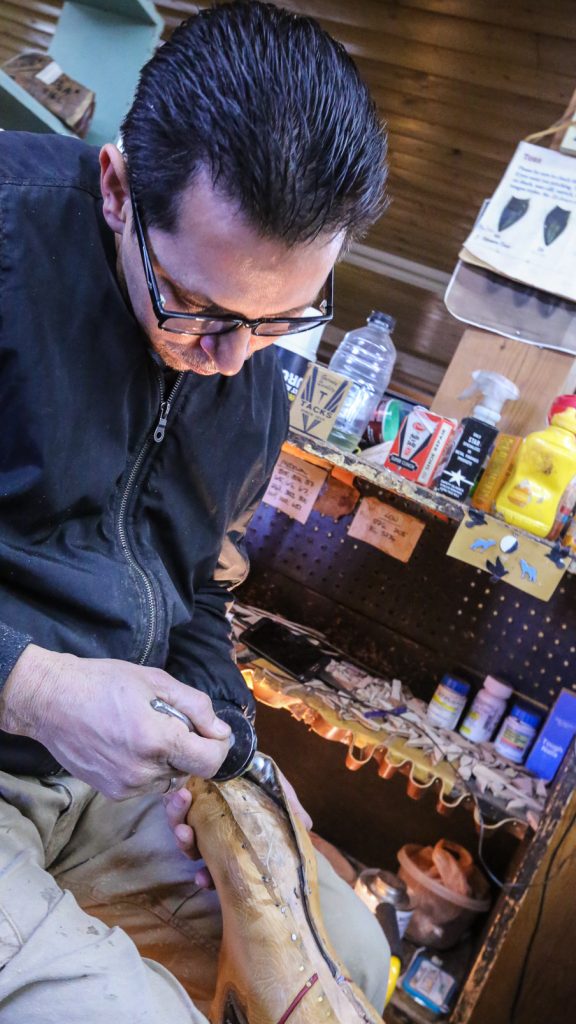
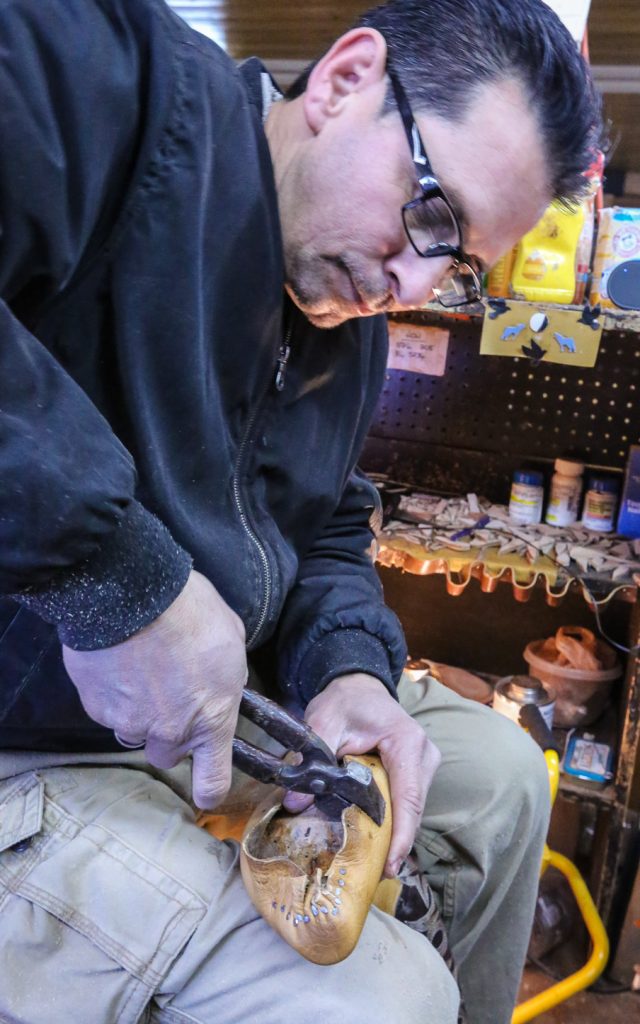


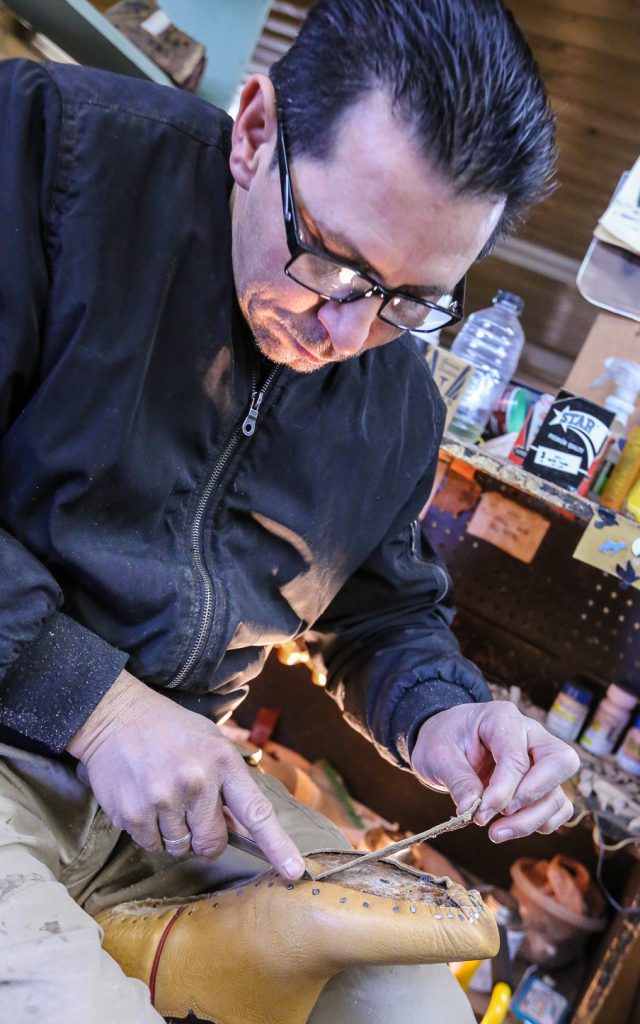

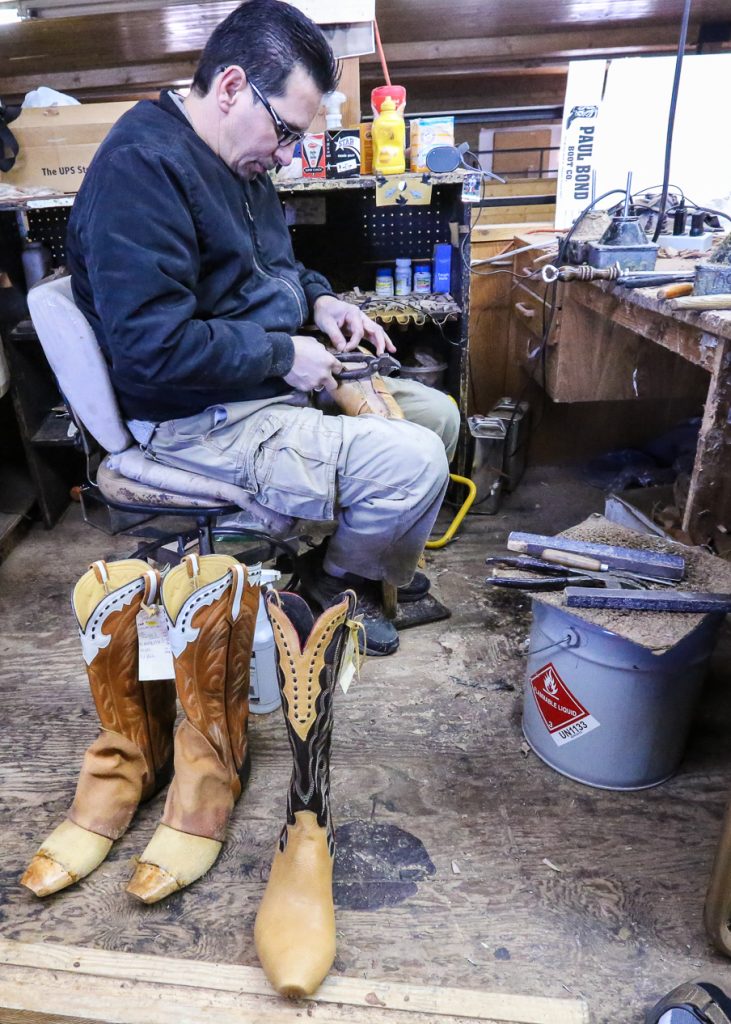
“Paul Bond knew about cowboys. He grew up on the family ranch near Carlsbad, New Mexico. By the age of sixteen he was breaking horses for a cavalry remount station, riding bareback broncs at area rodeos, and learning custom boot making at a local saddle shop. Rodeo lured him off his home range and he started going down the road to all the big shows from Fort Worth and Boston, to New York’s Madison Square Garden. He rode bareback horses and also worked up a contract act featuring trick and Roman riding. In the off-seasons, he continued to make custom boots and in the mid-1940s he opened a custom made boot shop back in Carlsbad. He moved the outfit to Nogales, Arizona in 1957. “
“To keep up with the demand for his boots, he needed the skilled leather craftsmen who were abundant along the border. “
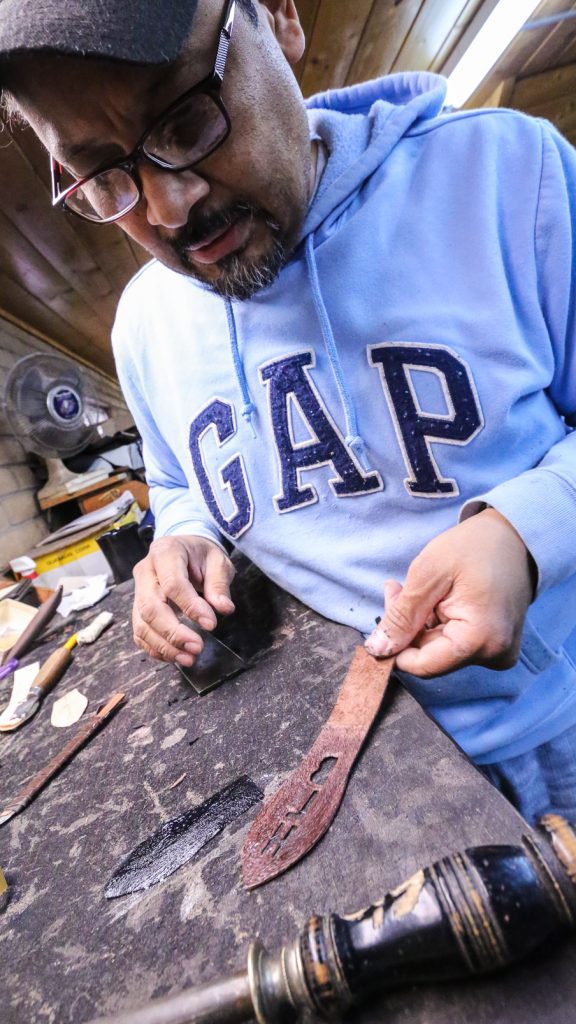
Boot pulls tailored to the customer’s order.
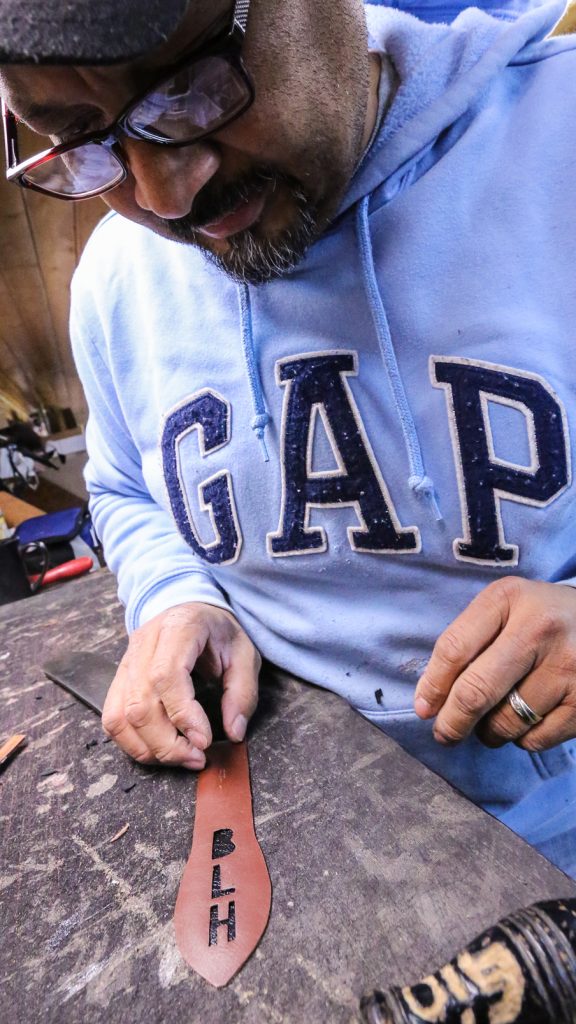
Fine, tedious and solitary work.
One would need to be exceedingly comfortable with one’s own company.

Giovanni gave me his name in a big bright voice
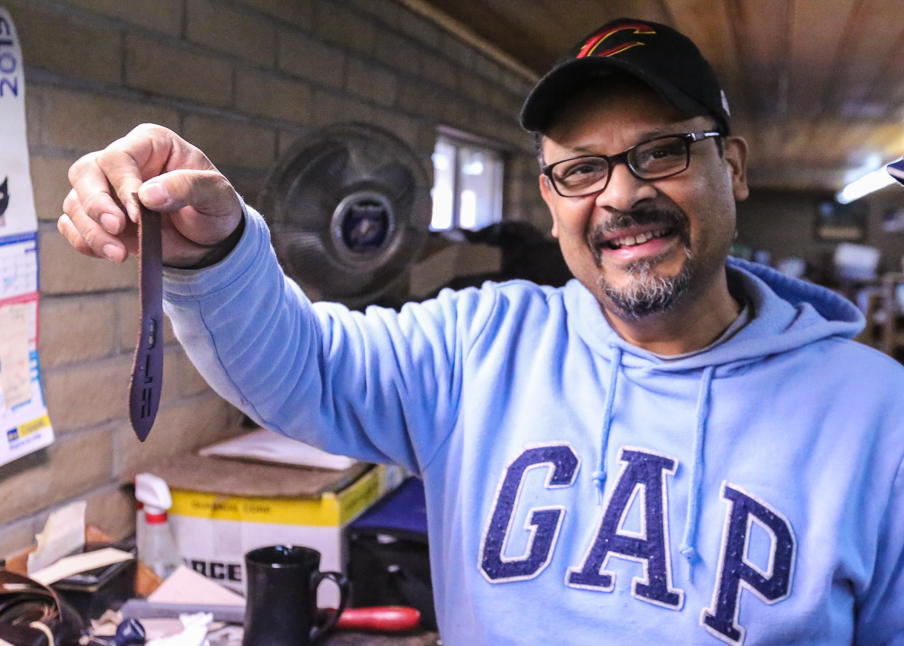
Pride.
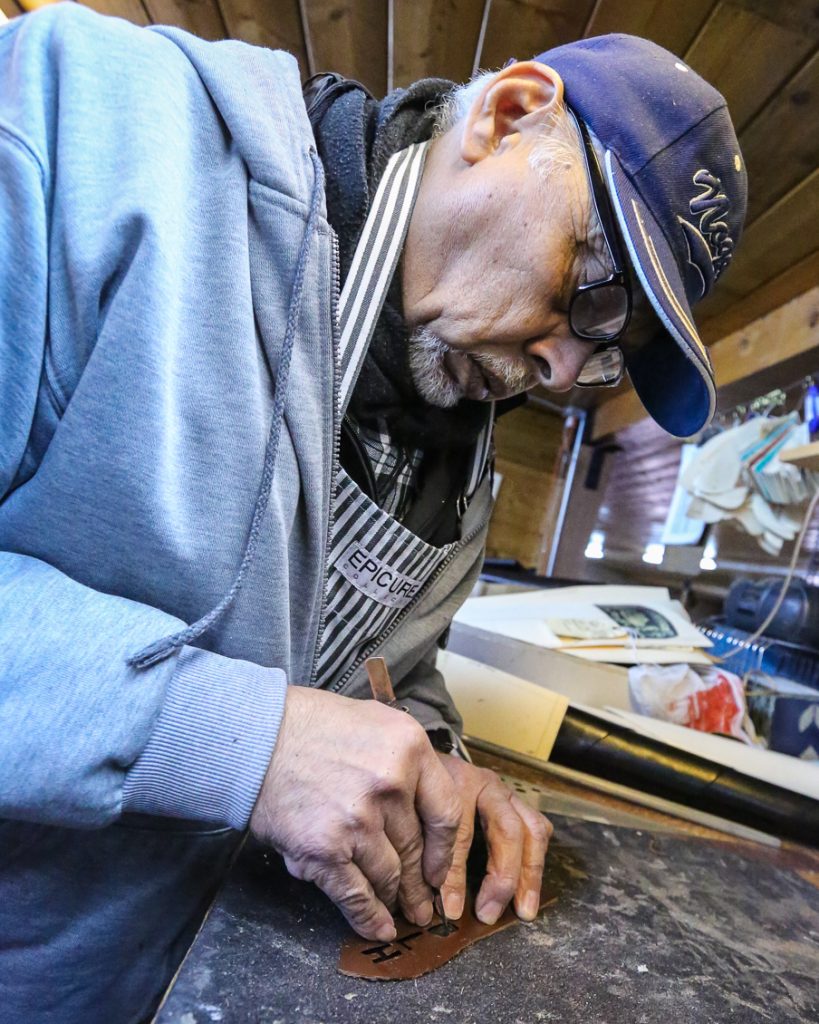
Thirty years of experience.
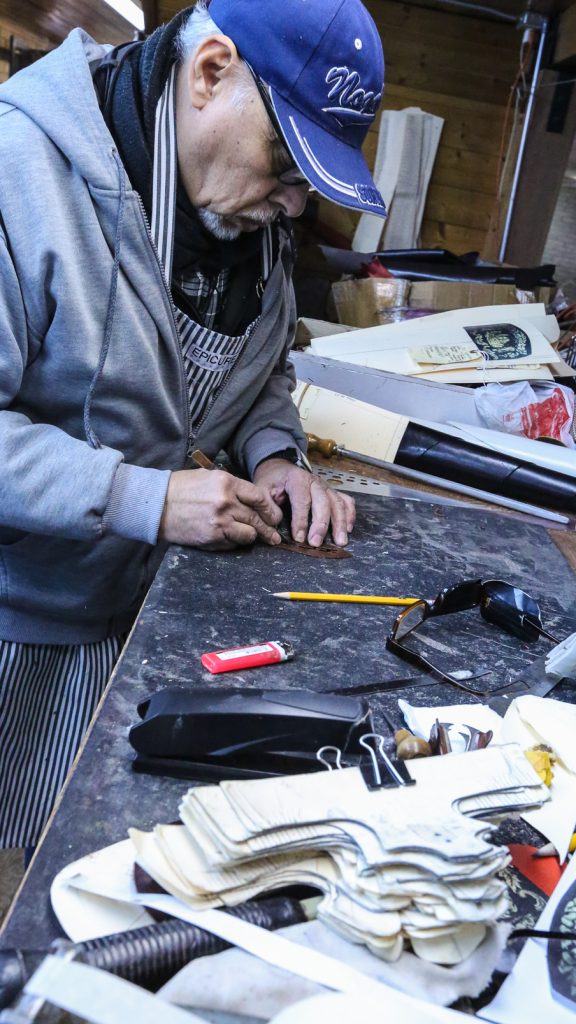
Someone hand cuts all those patterns.
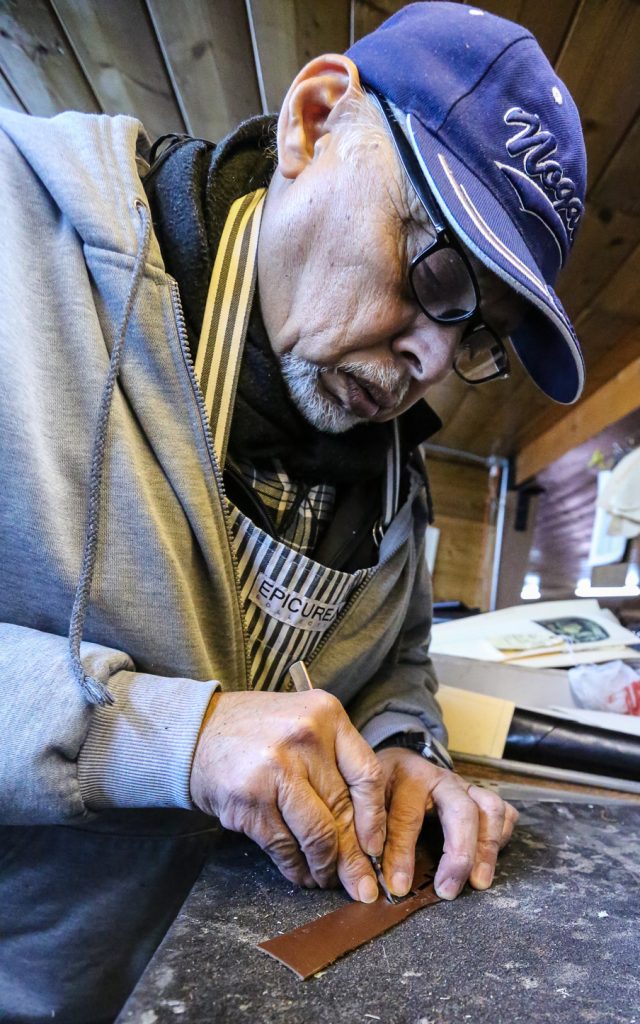
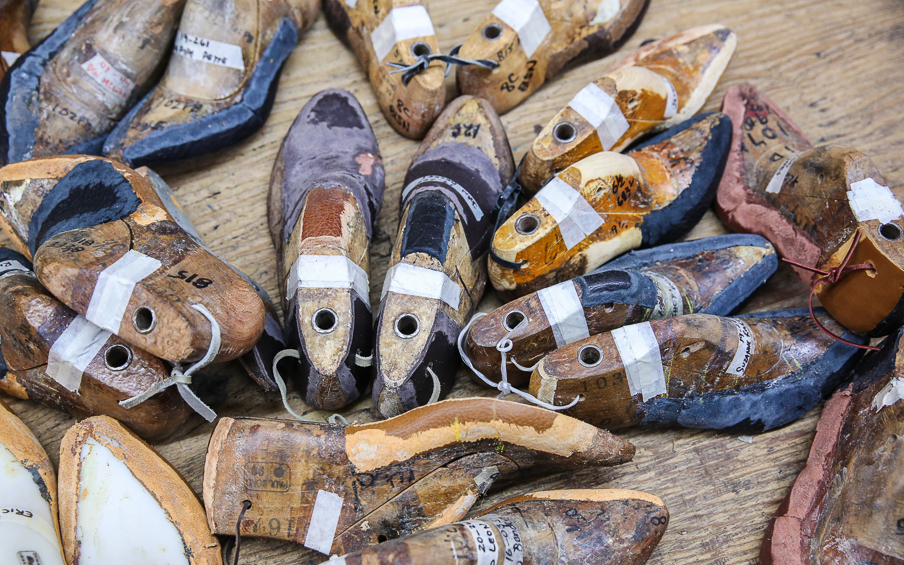
Lasts.
Lasts from the past.
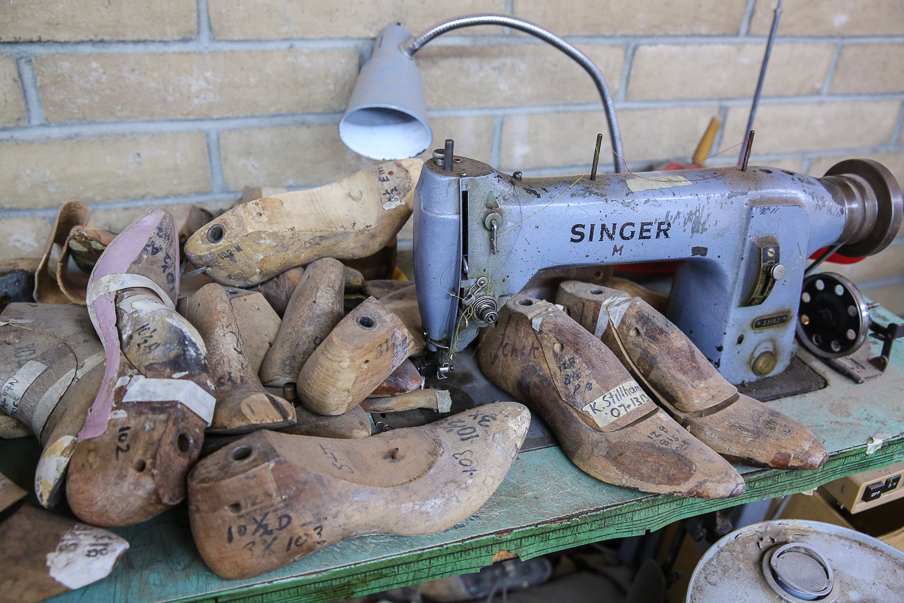
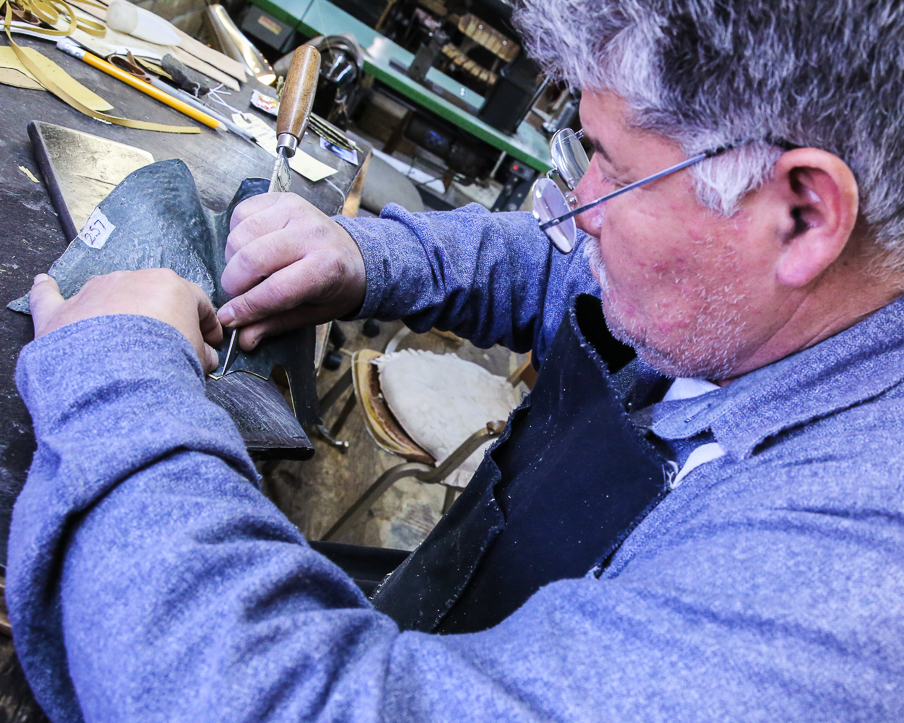
Uppers.
The Sock.
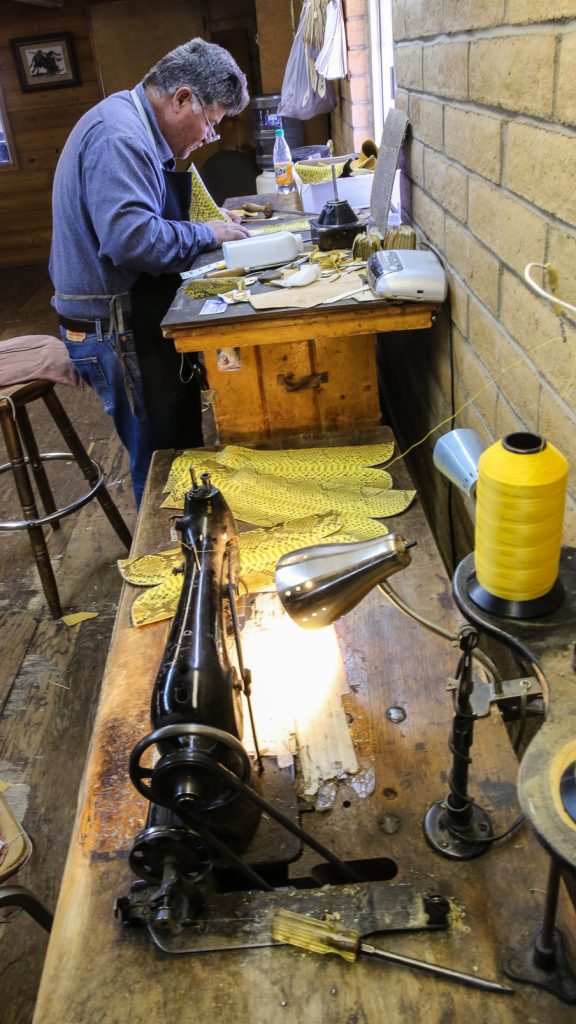
A lot happens at Jose Luis’ stations.
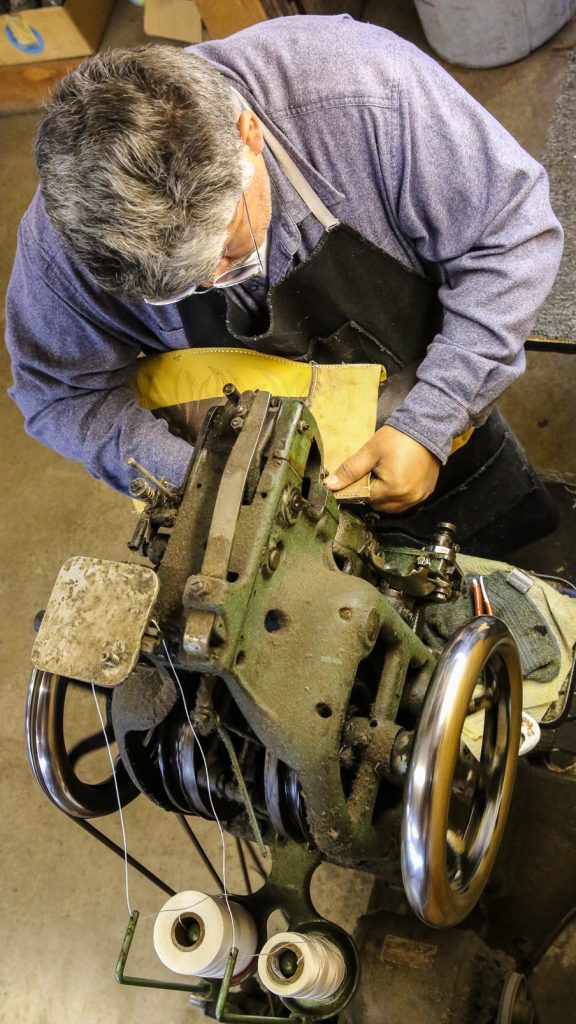

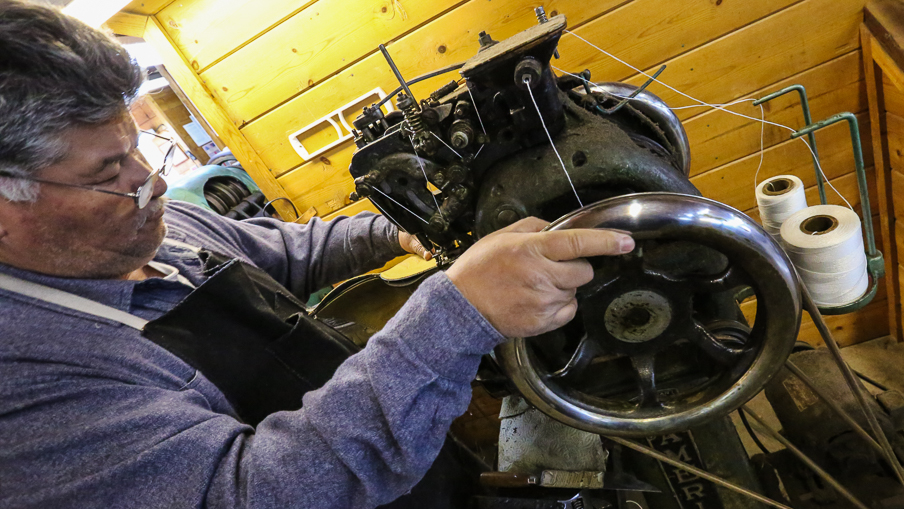
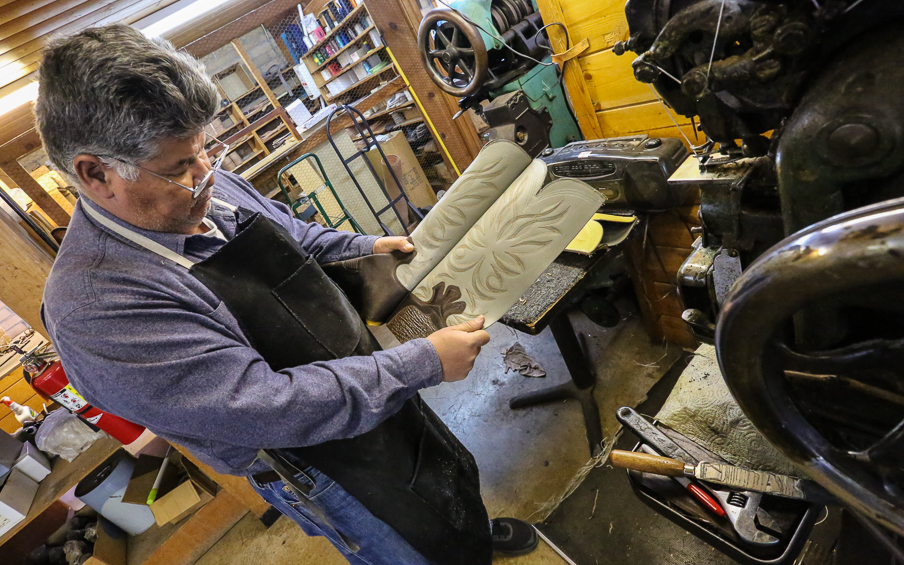
Critiquing one’s work with an eye of thirty years.
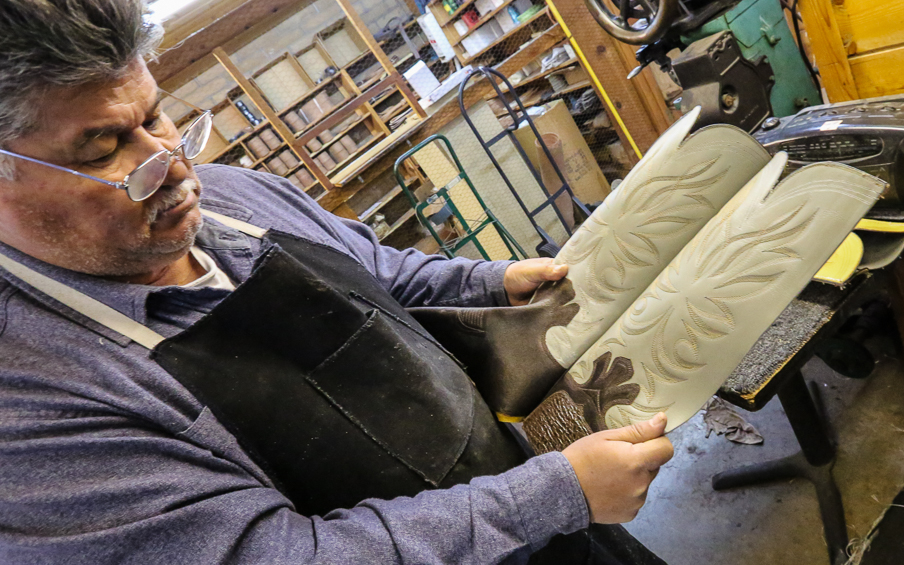
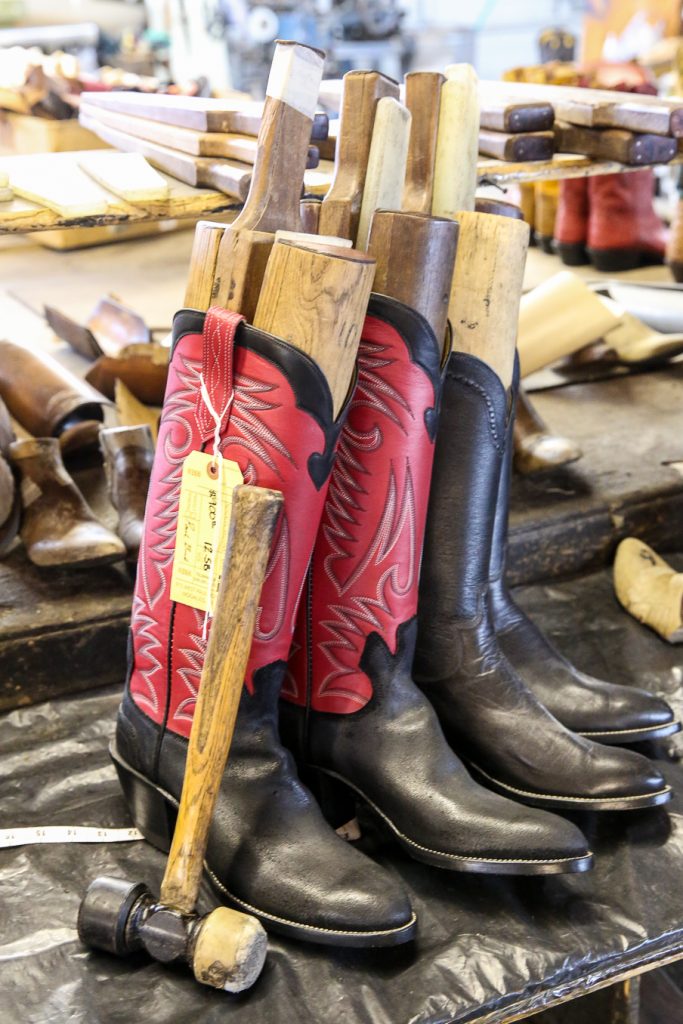
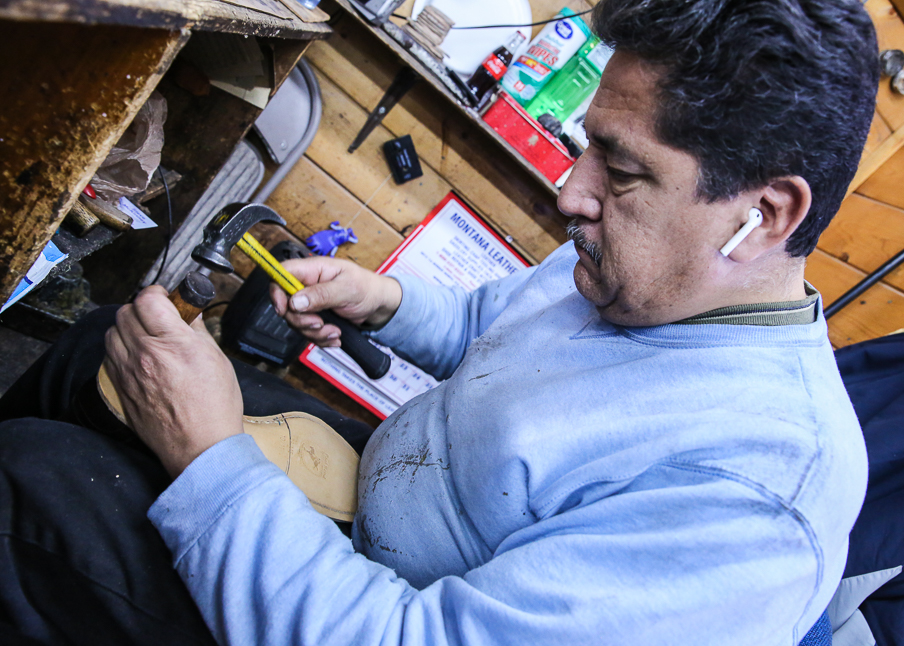
Soles and heels.
Seven different heel types of varying heights.
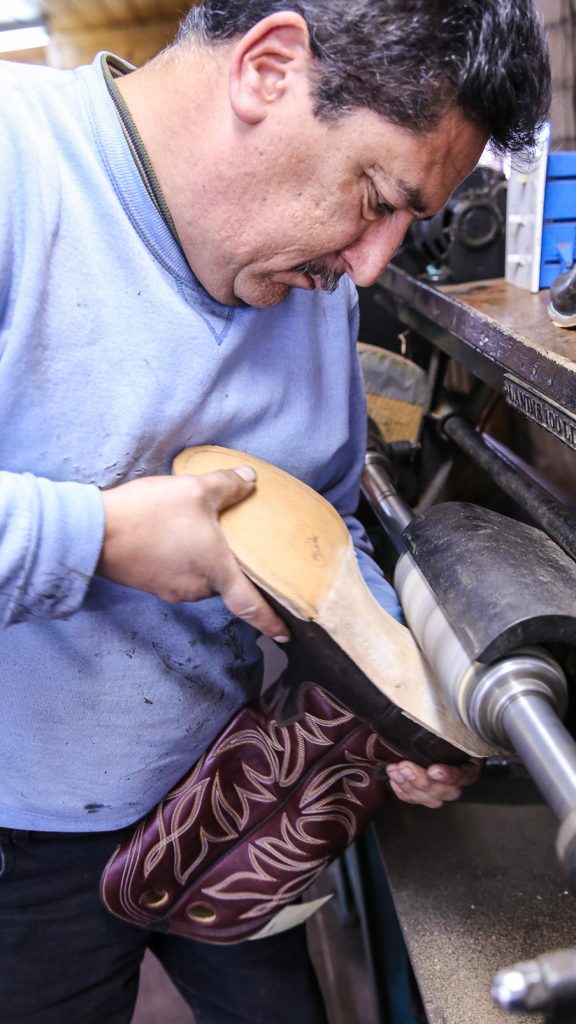
Sharp knives, sharp edges.
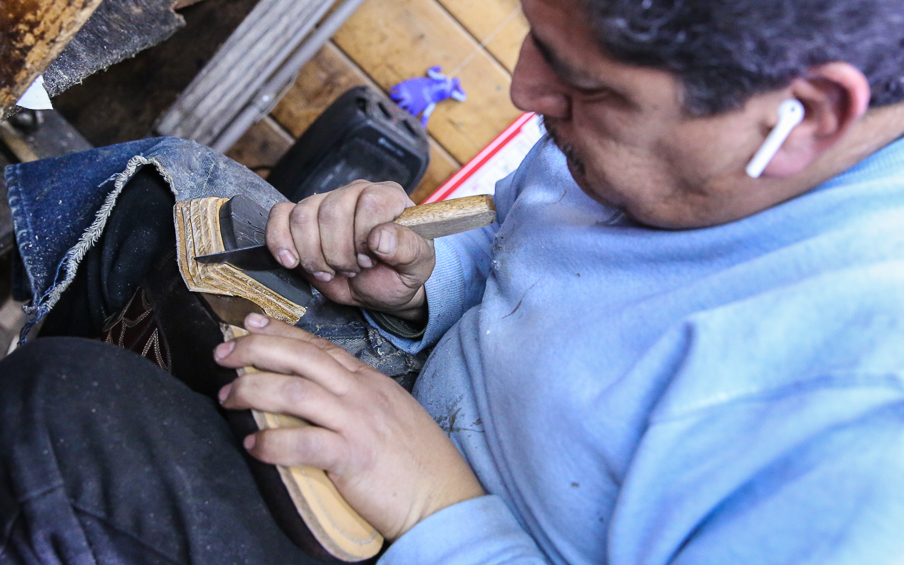
Stacked leather heels.

Hammers, brads and pegs.
Wooden pegs.
Moistening the pegs and leather soles, then drying in the sun sets the wooden pegs in the leather.
Old school.

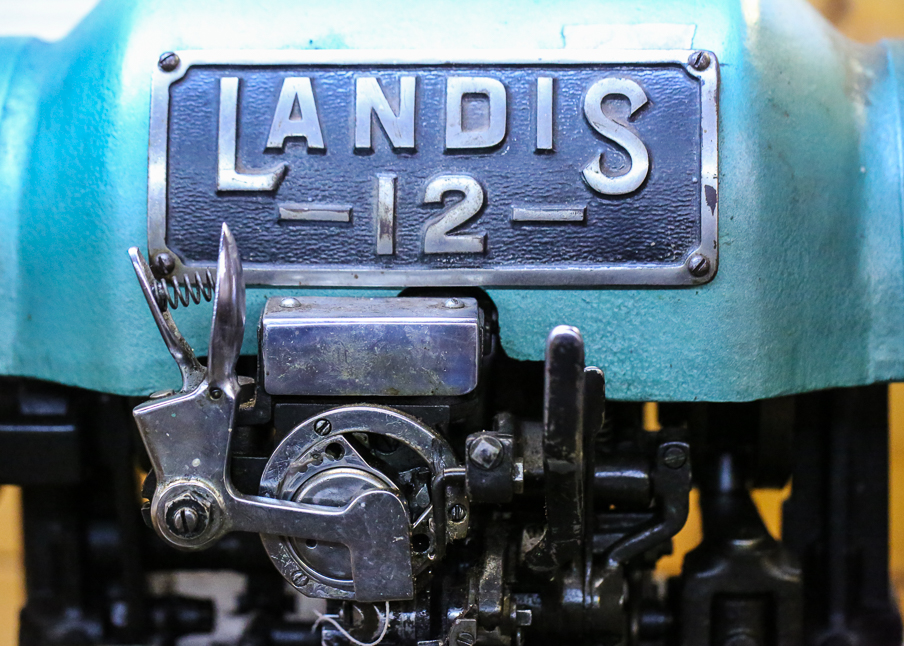
Impressive machines.
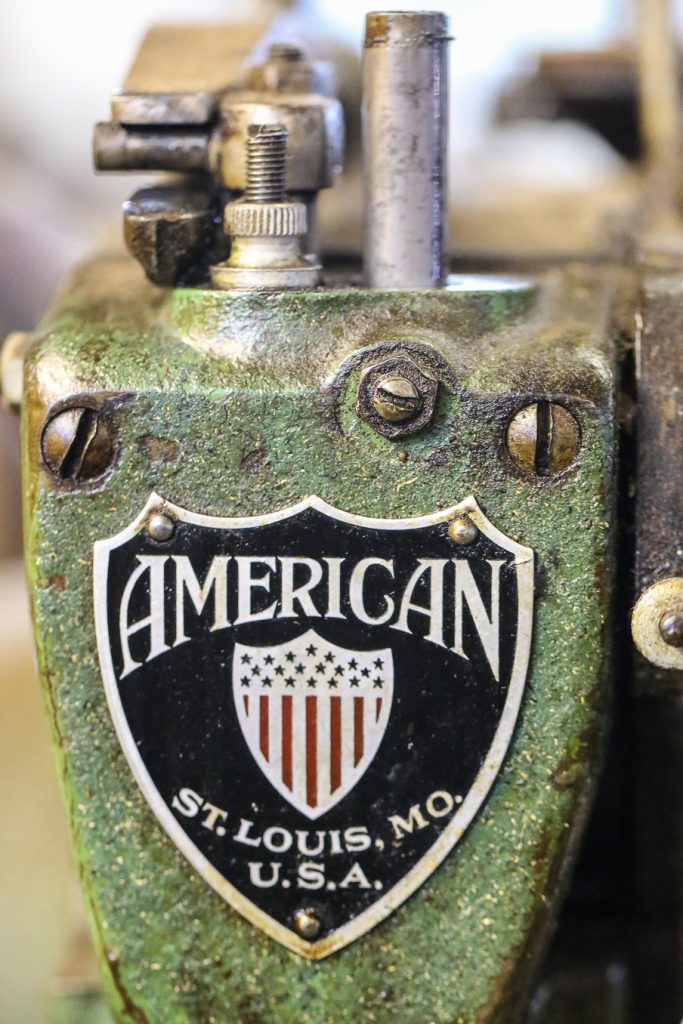

Repair work as well as new construction.
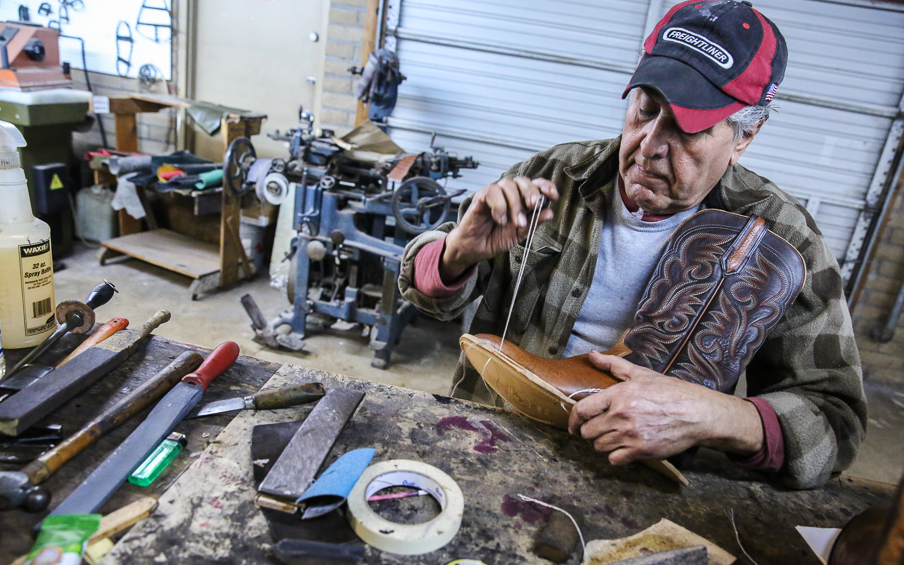
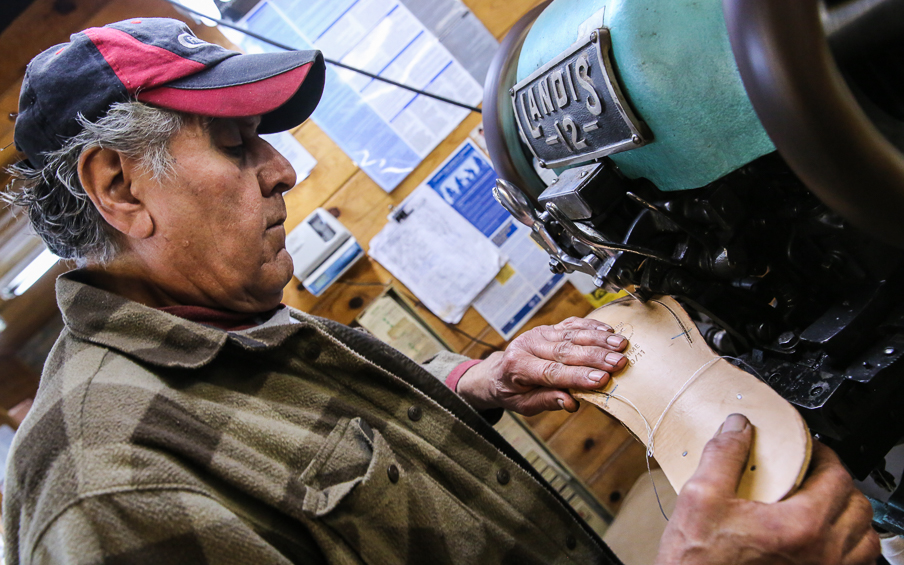
Machinery that needs daily servicing.
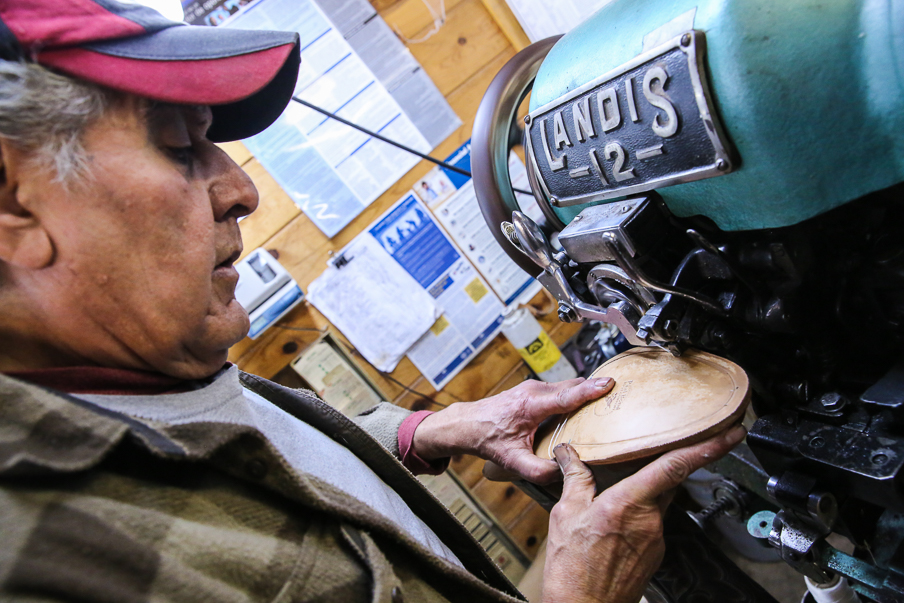
Got it right.
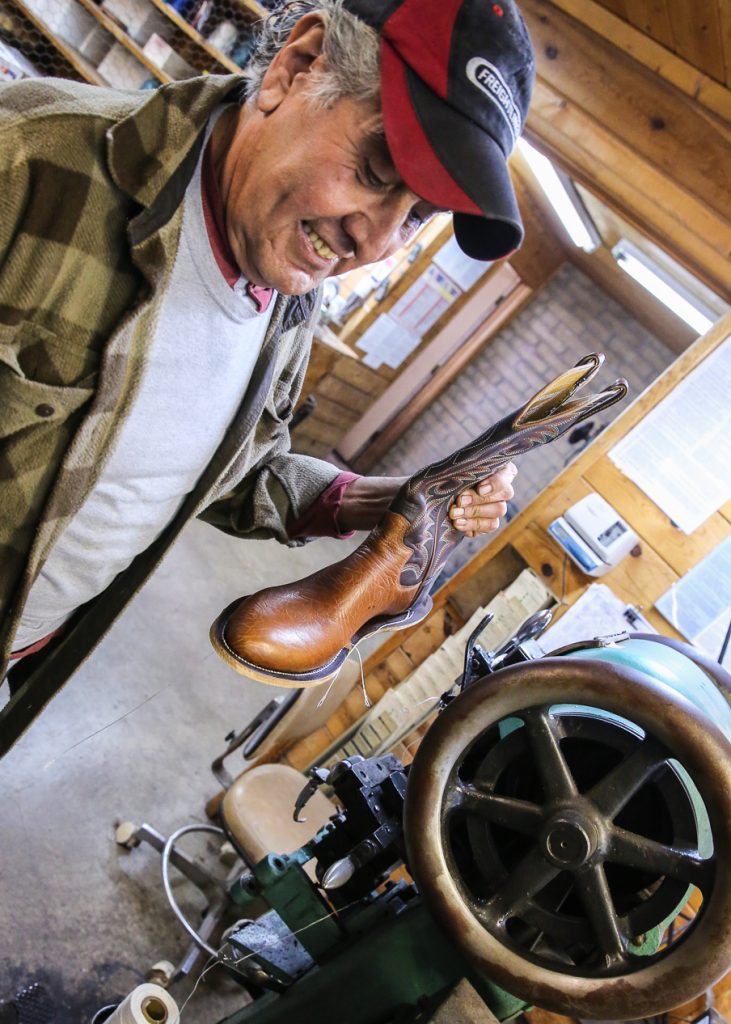
Paul Bond Boots facebook Group Link

Paul Bond Boots .Com facebook Link
Expanded Image Gallery ~ Paul Bond Boots – Nogales, Arizona
Thanks to Michael Ward of Paul Bond Boots for the invitation and hospitality.
One’s Work ~ Link To Similar ‘Work’ Related Posts
SOURCE LINKS
15 of the Best Cowboy Boots You Have Ever Seen
A Tribute To Paul Bond – True West Magazine
Paul Bond Left His Mark On Nogales
His Boots Are Made For Talking About: NPR
Through Time, Arizona Time ~ Mansions of Main Avenue – Tucson, Arizona
Warning: Use of undefined constant gad_content_tag_filter_replace - assumed 'gad_content_tag_filter_replace' (this will throw an Error in a future version of PHP) in /home/dx87kwtjkt0i/public_html/wp-content/plugins/web-ninja-google-analytics/webninja_ga.php on line 1813


Presidio Neighborhood
The city’s first neighborhood listed on the National Register of Historic Places, El Presidio is where Tucson began. Most of the structures date from 1860 to 1920 and include Sonoran Row houses, Mission Revival, bungalow style and American Territorial. El Presidio encompasses Hohokam pit houses, the 18th-century Spanish colonial presidio, the subsequent Mexican village, and Anglo homes designed by legendary Tucson architects such as Henry C. Trost and Holmes & Holmes. Celebrated territorial families left their names on historic houses they built: merchants including the Steinfelds and Jacomes, bankers, attorneys and civic leaders including Sam Hughes and J. Knox Corbett. Home to restaurants, offices, shops and the Tucson Museum of Art, this is an eminently walkable neighborhood.

Bounded by Sixth Street to the north, Church and Stone avenues to the east, Granada Avenue to the west, and Congress Street to the south, El Presidio features historic homes from the 1800s side by side with law offices, architecture firms, and Tucson City Hall.
The downtown neighborhood is a testament to the city’s delicate balance between embracing its origins, respecting the people who first called the Old Pueblo home, and moving forward as a modern city with over half a million residents.

El Presidio’s origins date back to 1775 when Hugo O’Conor and Spanish settlers built a walled military fort, Presidio de San Augustín del Tucson, for protection from Apache attacks.

Inside the fort, 400-500 residents lived in homes and barracks, tended to horses, went to church, and buried their dead.
The Spanish were not the first inhabitants in the area, though. Hohokam Indians called El Presidio home from 700-900 A.D.

Each wall of the fort was 750 feet long, 18 inches to four feet thick, and six to 16 feet high. Take a walk down Court Avenue to Pennington Street, up Main Avenue and across Washington Street and you will have retraced the walled portion of the original fort.
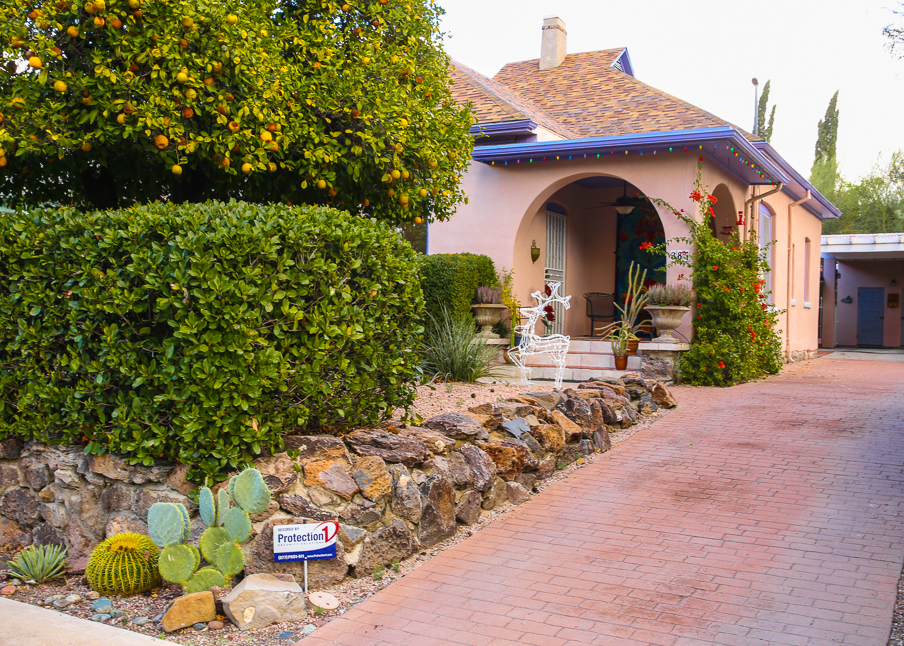
Apache attacks dwindled by the 1850s and the walls started coming down.

Modern Tucson covered up the remaining fort walls long ago — the last known portion was demolished in 1918 — but remnants can still be found underground and the location of the east side of the wall is marked in the courtyard of the old Pima County Courthouse.
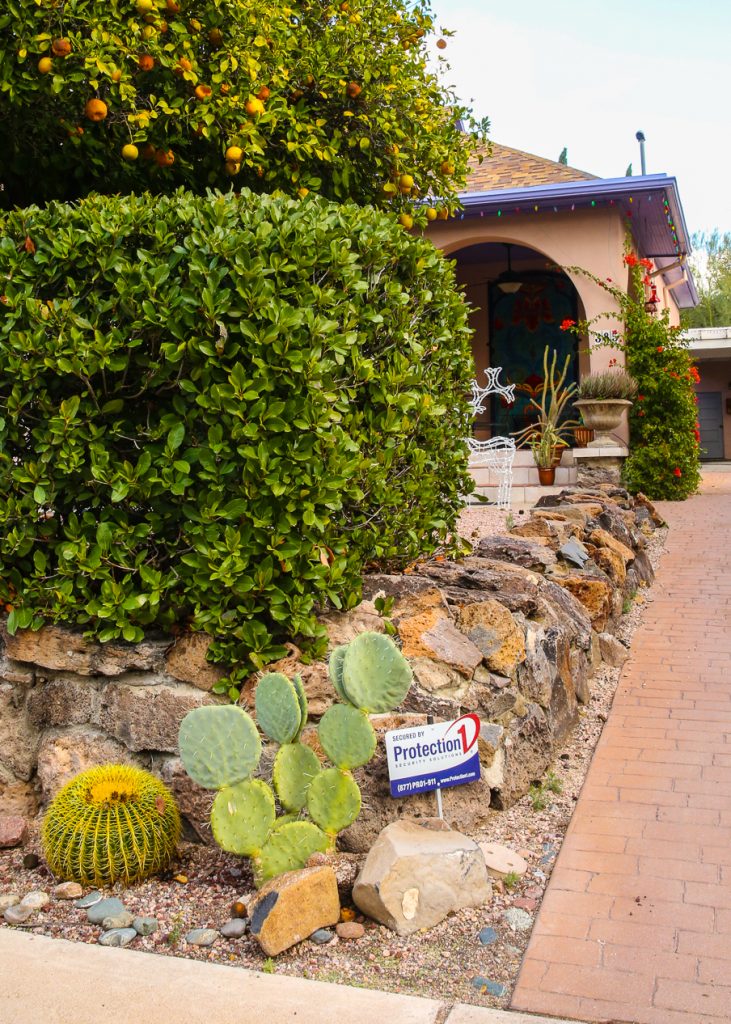
A few short blocks of Tucson’s Main Avenue, an area once nicknamed “Snob Hollow,” showcase Tucson’s architectural variety, as the mansions wealthy residents built here changed along with the trends over time.
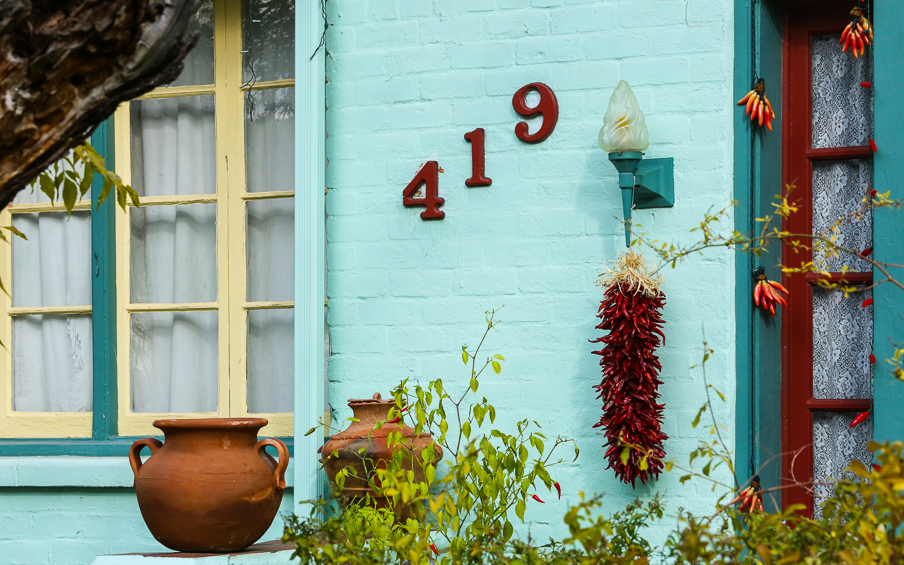

Leonardo Romero House
The Leonardo Romero house, built about 1868, is also part of the museum’s historic block. It began as a transformed Sonoran row house with a pitched roof, but underwent many alterations over time, including the addition of a brick wall. Today the unremarkable looking building houses a ceramics program.
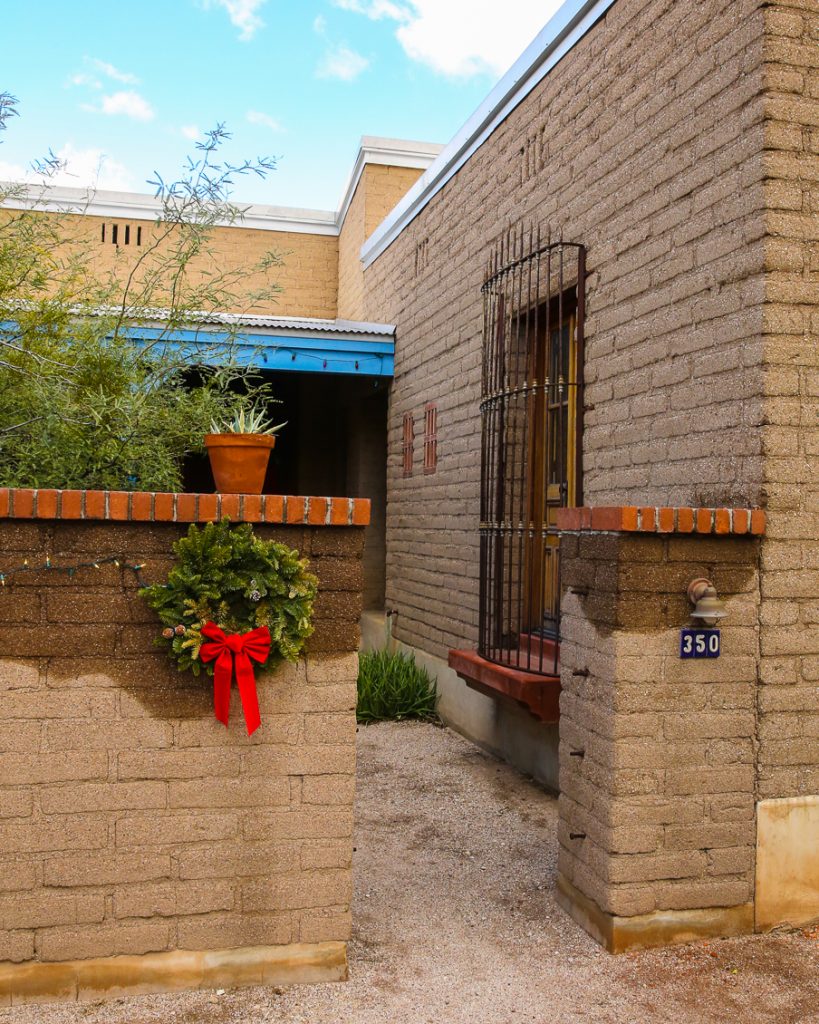
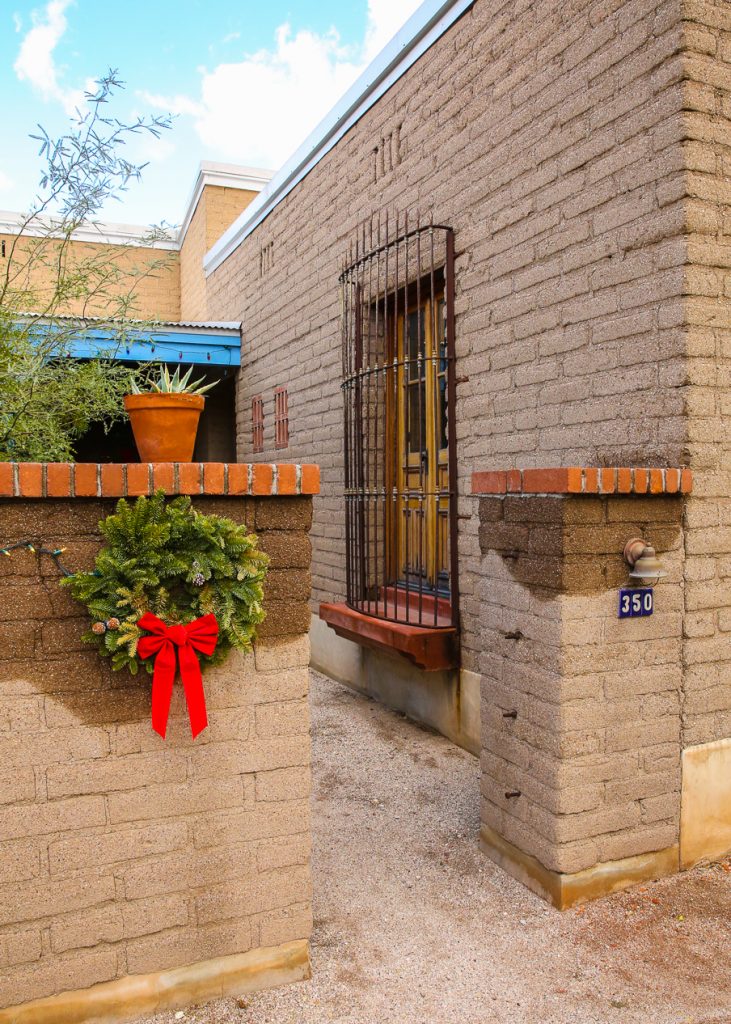

La Casa Cordova
The oldest homes are adobe, and several are preserved as part of the Tucson Museum of Art’s Historic Block. One of these is La Casa Cordova, a typical Sonoran row house thought to have been built before 1848. It is believed to be the oldest remaining structure in downtown Tucson.
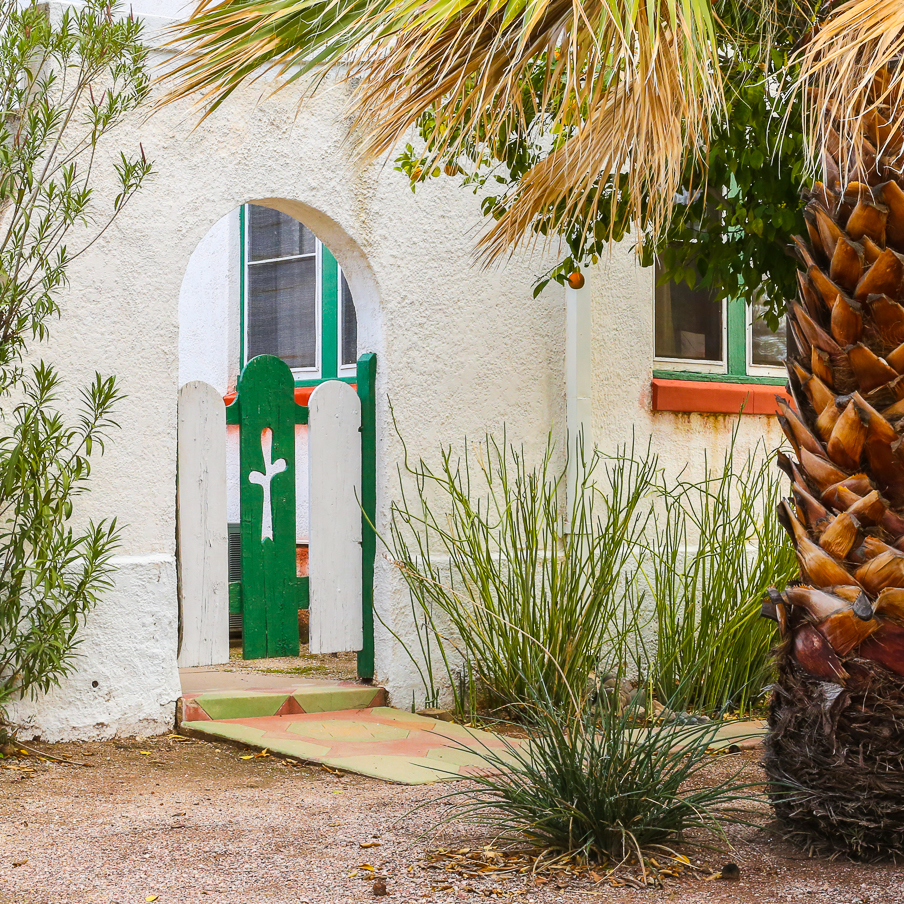
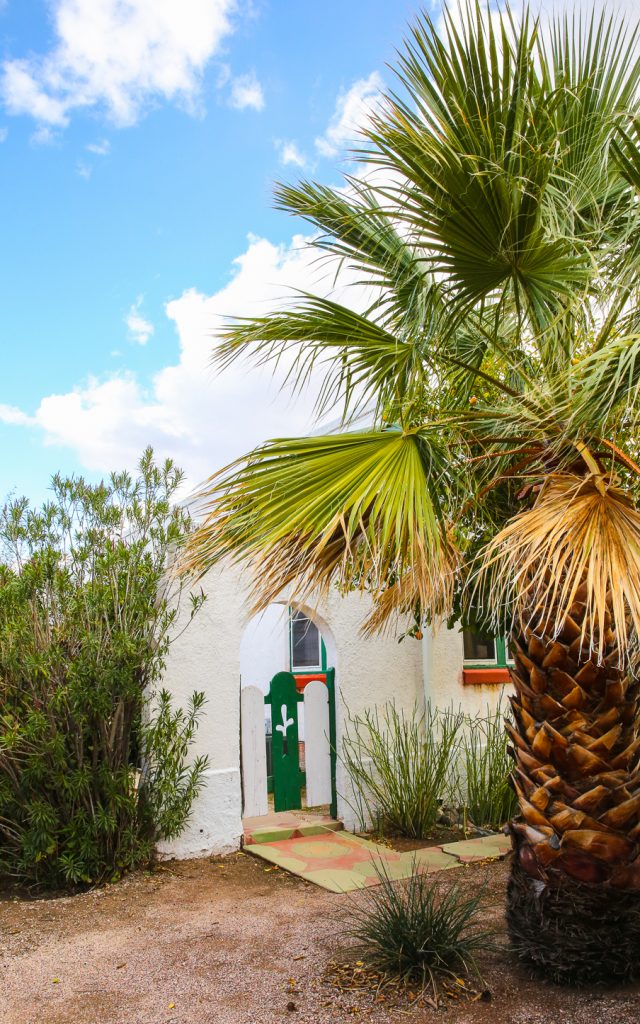
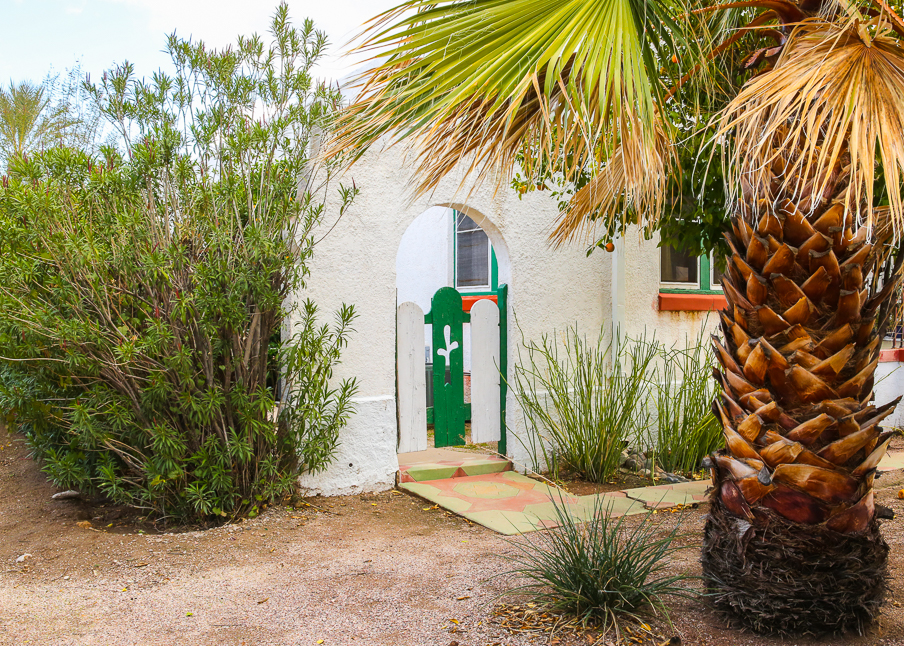
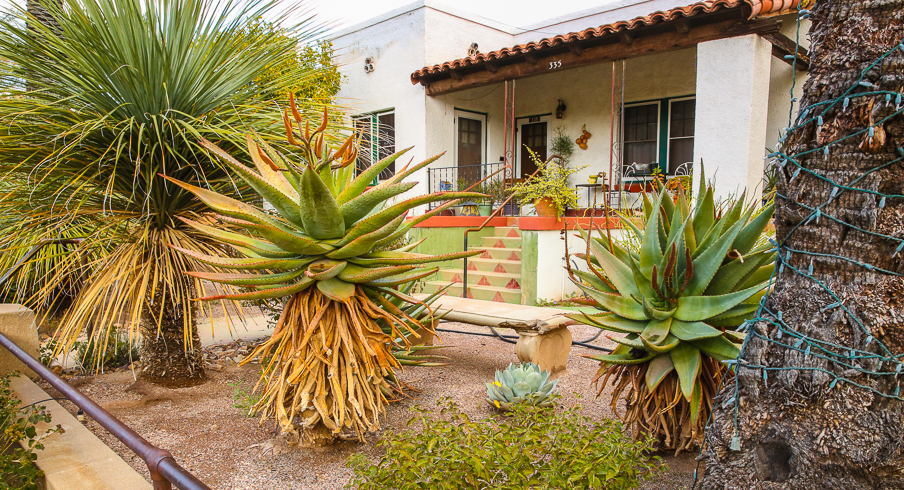
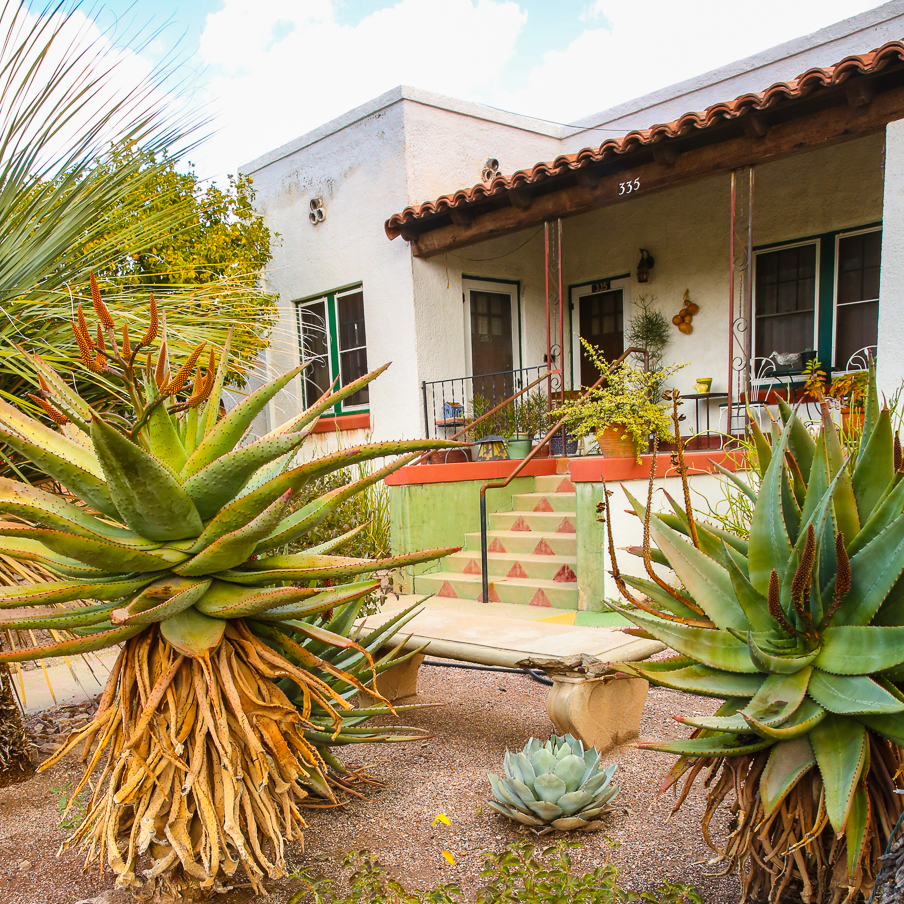

Edward Nye Fish House
The museum’s historic block includes the adjacent Edward Nye Fish house, which was constructed about the same time. Like the Steven-Duffield house, the Fish house is a typical Sonoran row house and also often hosted social gatherings and visiting dignitaries.
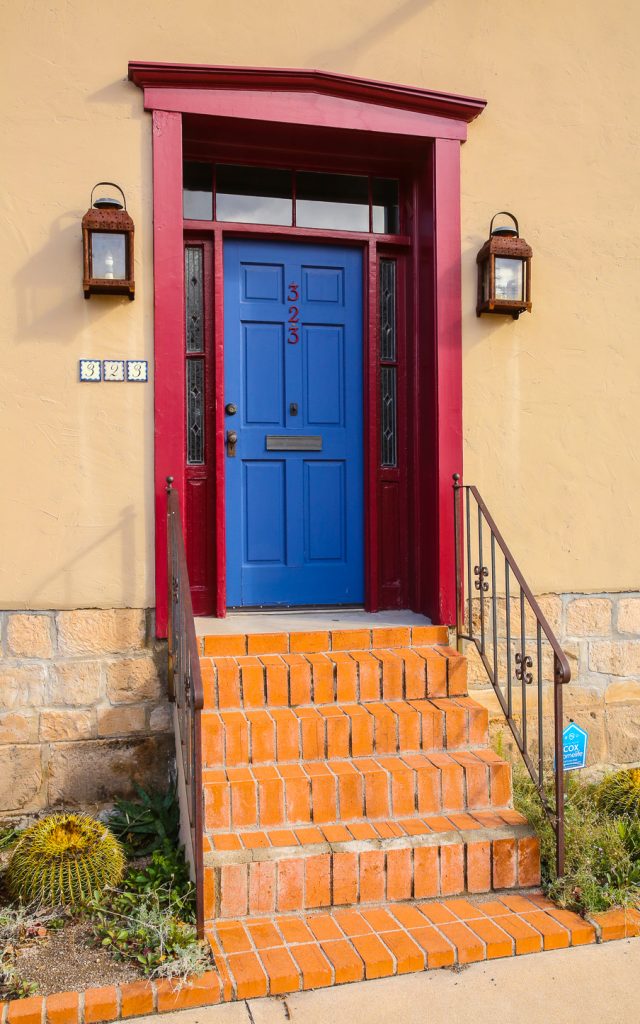
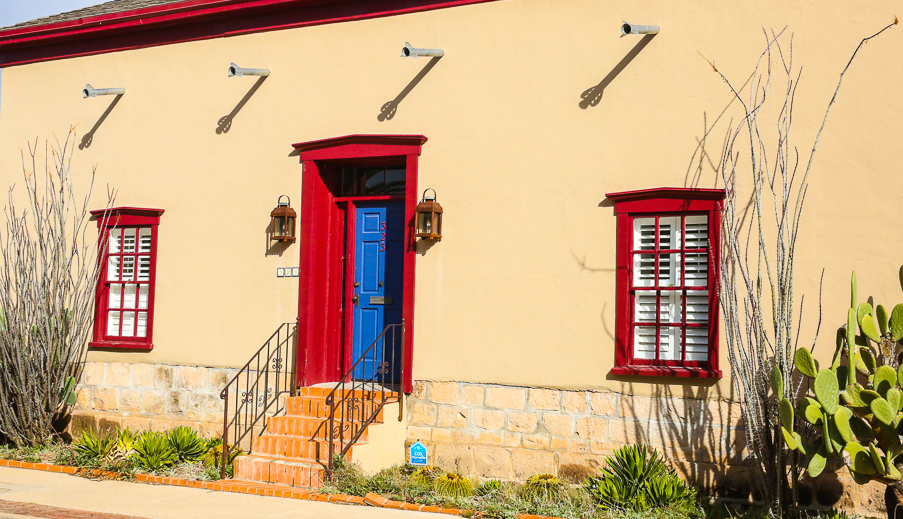

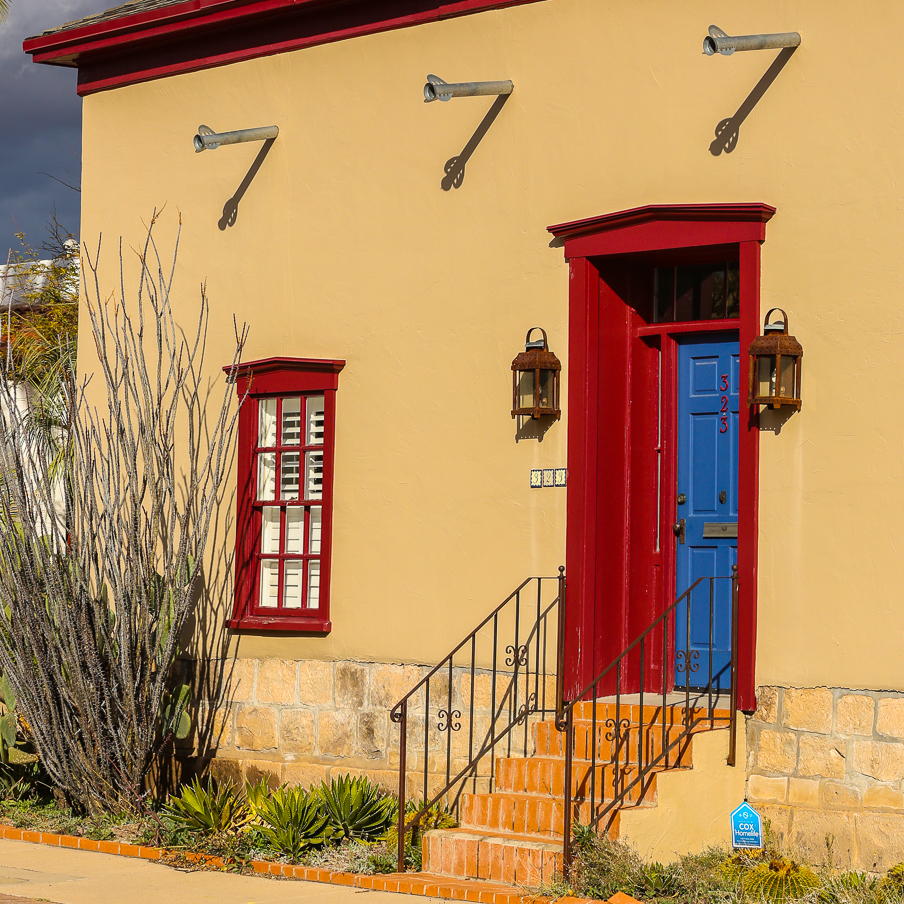
Sam Hughes House
The Sam Hughes house was constructed about 1865 as a typical adobe structure, but was expanded several times to accommodate the large Hughes family. Easily identifiable updates include the addition of shallow wood pediments typical of Greek Revival architecture, gables, and a rock foundation.

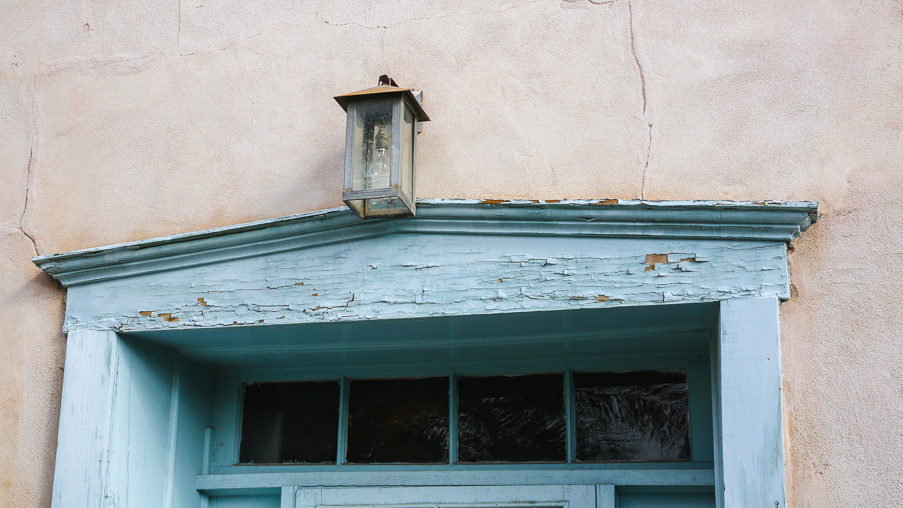
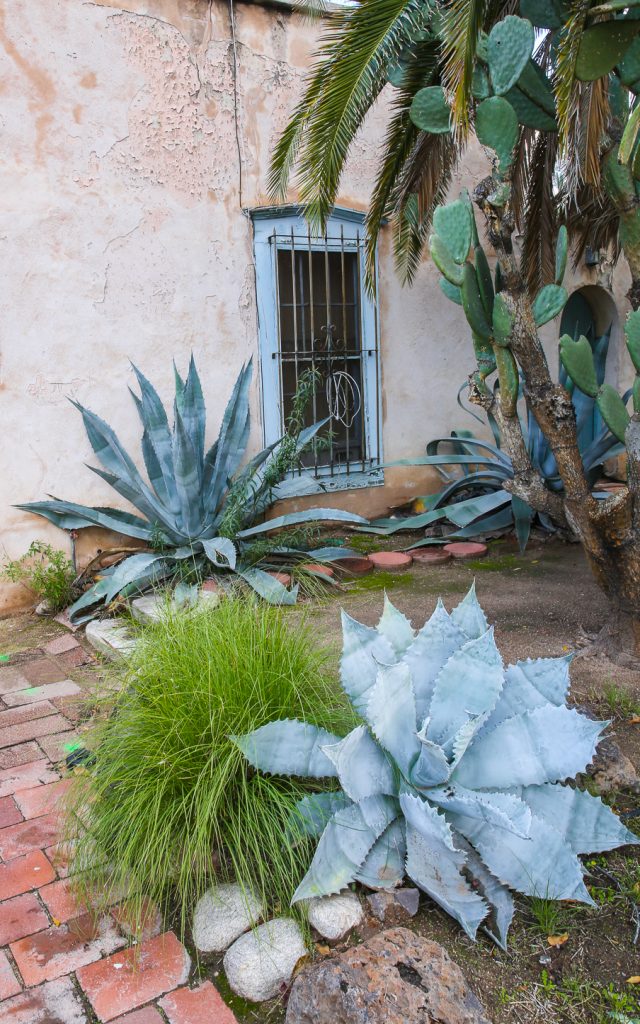
Stevens-Duffield House
The nearby Stevens-Duffield house began as two separate houses.
The first structure was a small Sonoran row house built by US Marshall Milton Duffield about 1865. Soon thereafter, Hiram Stevens built his own Sonoran home next door. Stevens purchased the Duffield home and, by 1870 had incorporated it into his own expanded home.
A popular politician and businessman, Stevens often hosted important visitors from Washington DC and the Tucson area in his elegantly decorated home. The home’s role in Tucson society came to an unexpected end when Stevens killed himself after an attempt to kill his wife was foiled by the heavy Spanish comb she wore in her hair.
While his wife continued to live in a portion of the house until her death in 1916, the house was largely a rental property for most of its existence.
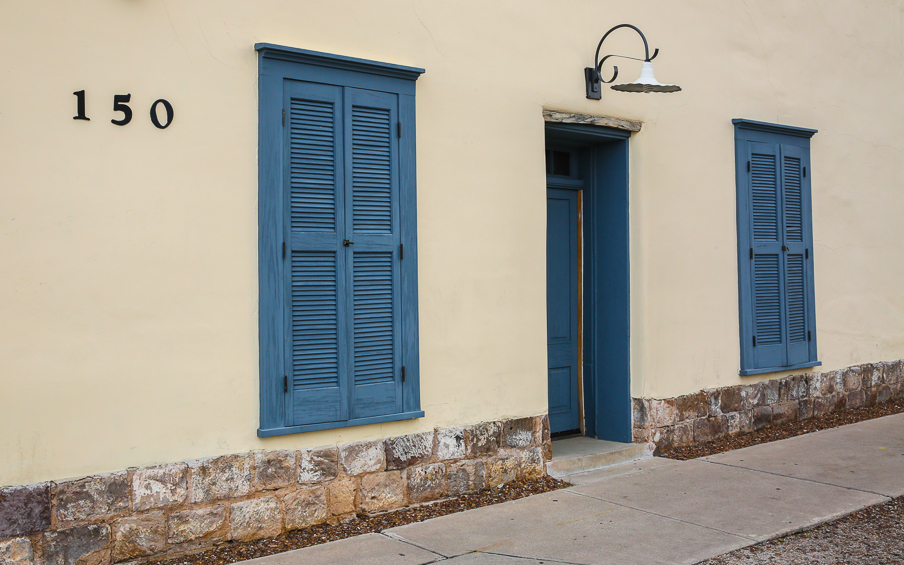


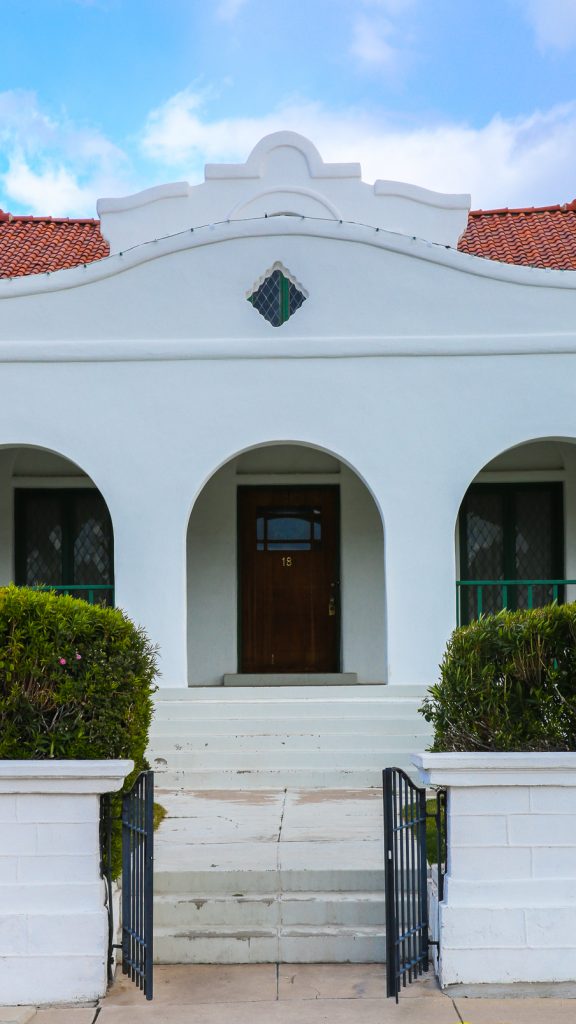
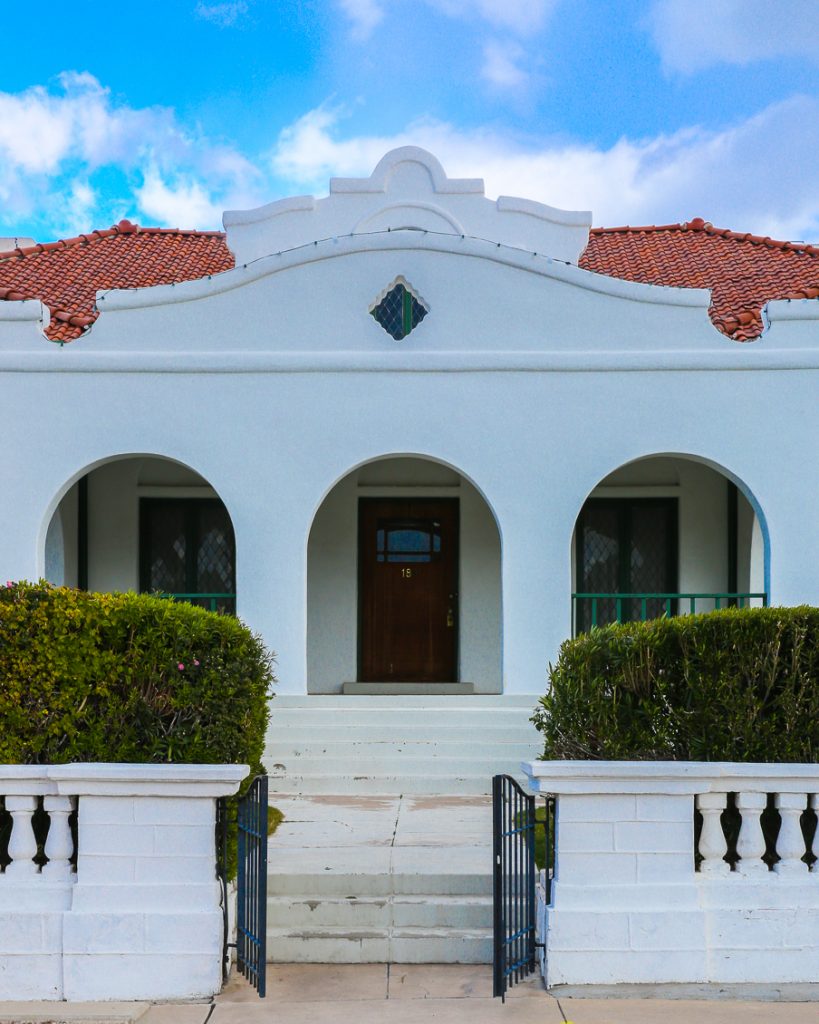
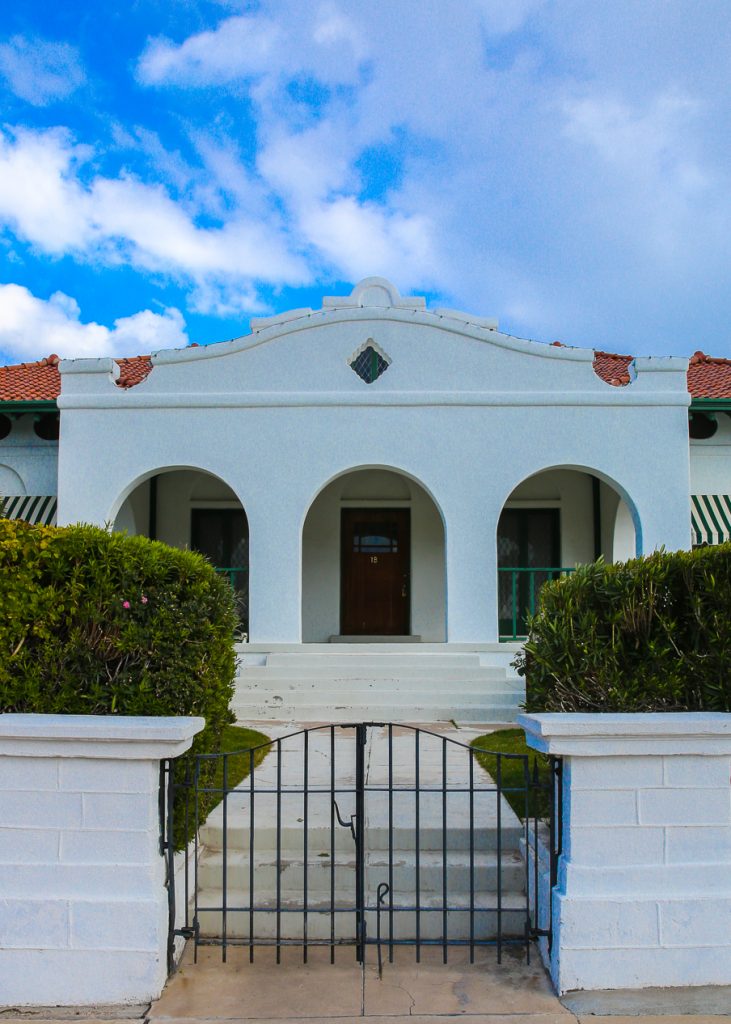

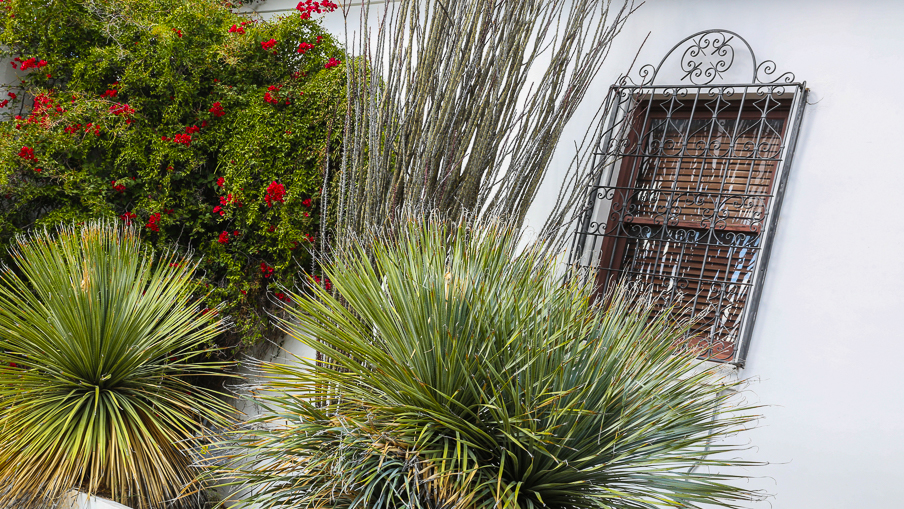
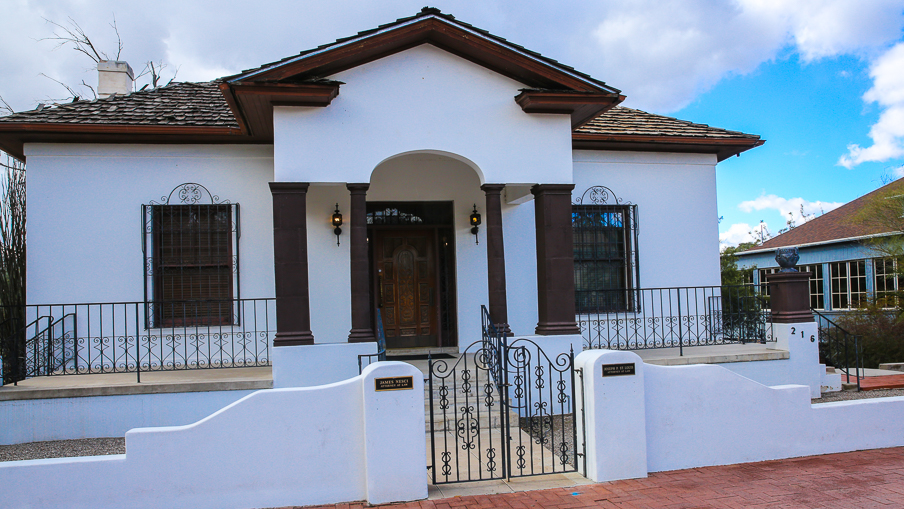
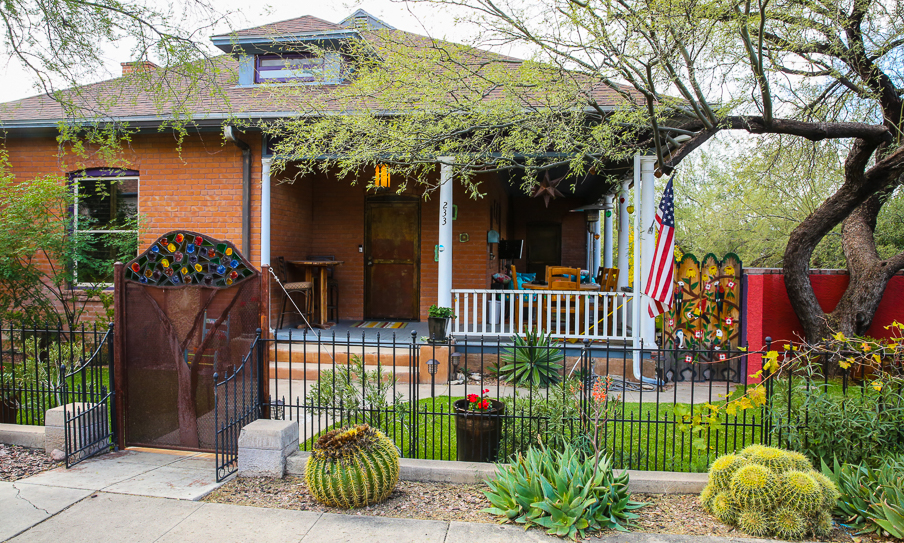

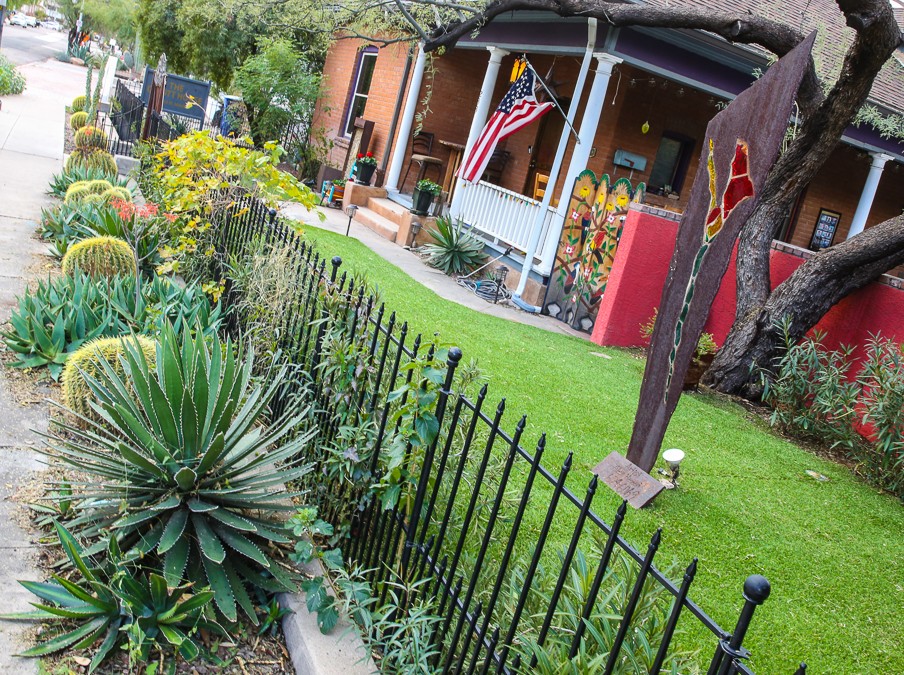

Cheyney House
The Cheyney house, a Mission-style mansion from around 1900, was falling into ruin and nearly destroyed by fire before restoration began in 2001.


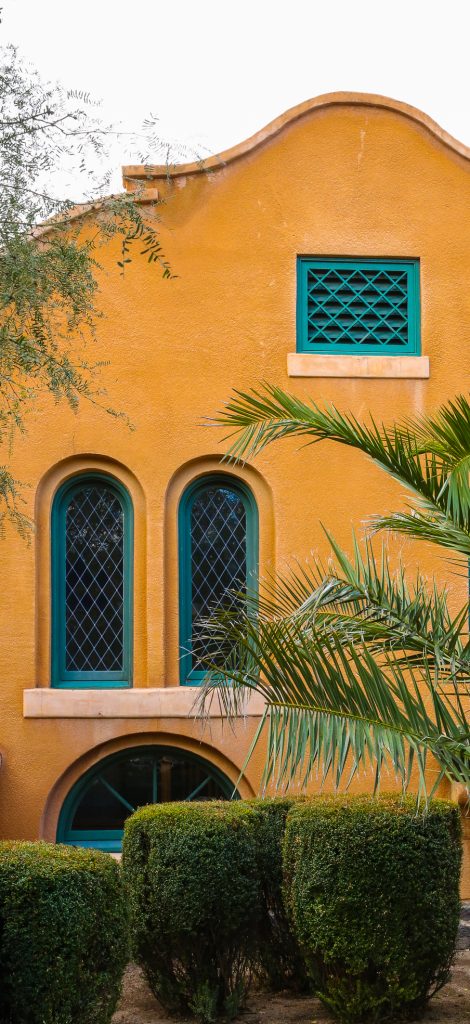

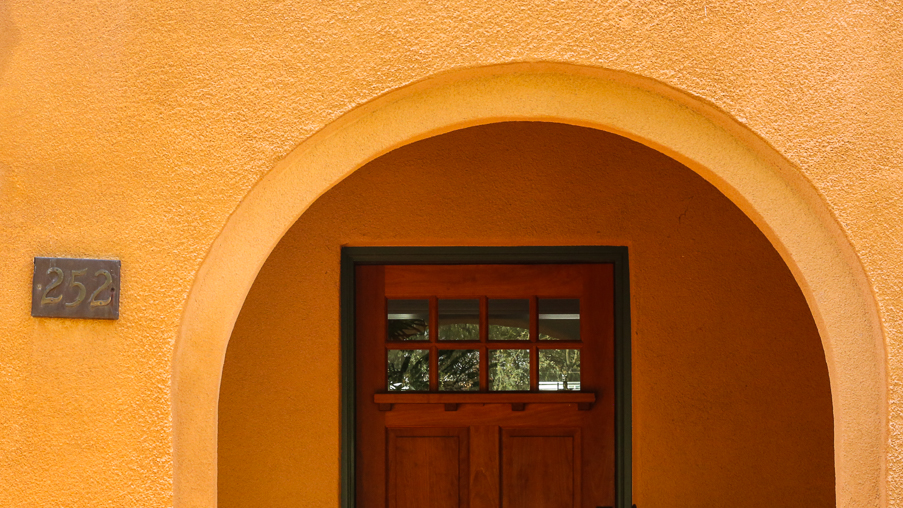
Steinfeld House
The Steinfeld house was constructed around 1900 in California Mission Revival style with additional decoration. It was served briefly as the home of the original thirteen bachelors who founded the Owl’s Club. Today it houses offices.
Despite the fact that the Owls were already declining in number as they found brides and established their own homes, in 1902 the Steinfeld house was replaced by the larger and more commanding home. Structurally Mission Revival style, but decorated with non-traditional ornamentation, this Owl’s Club is truly a mansion. It was restored in 1985 after becoming a ruin.
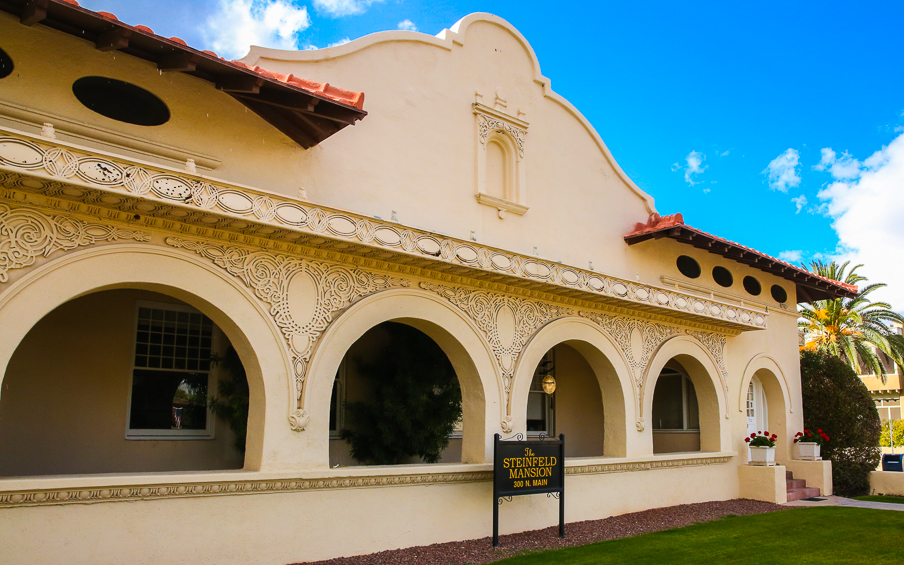
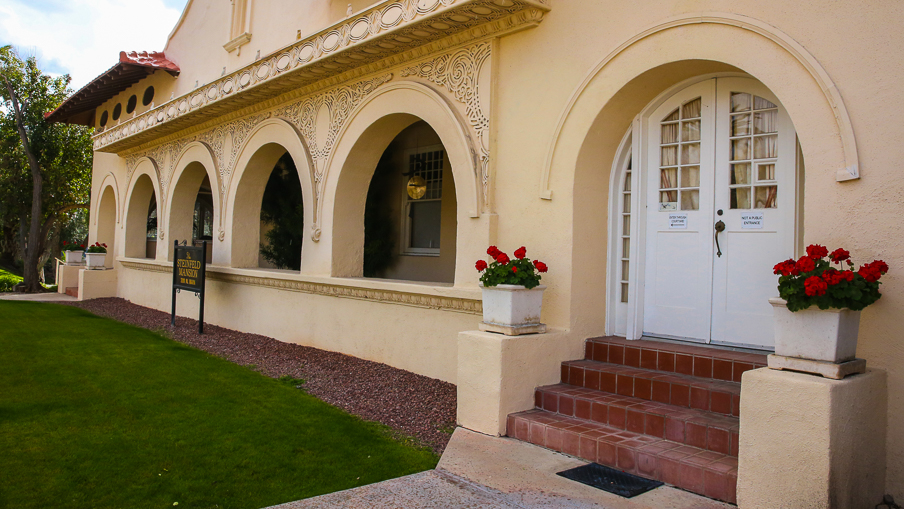
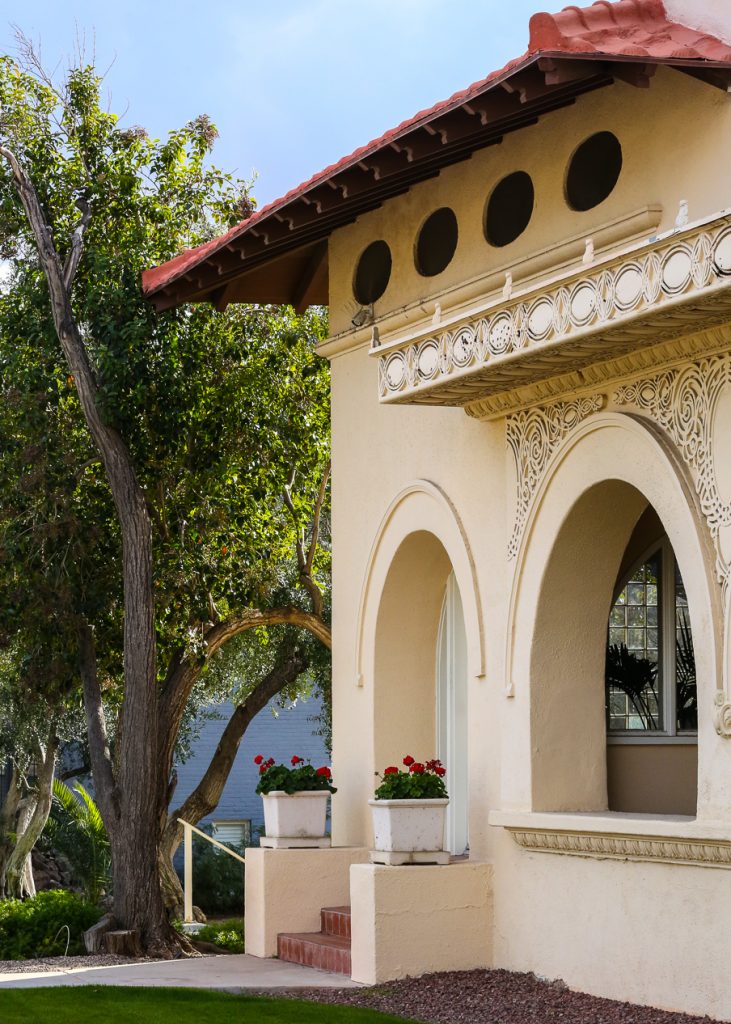


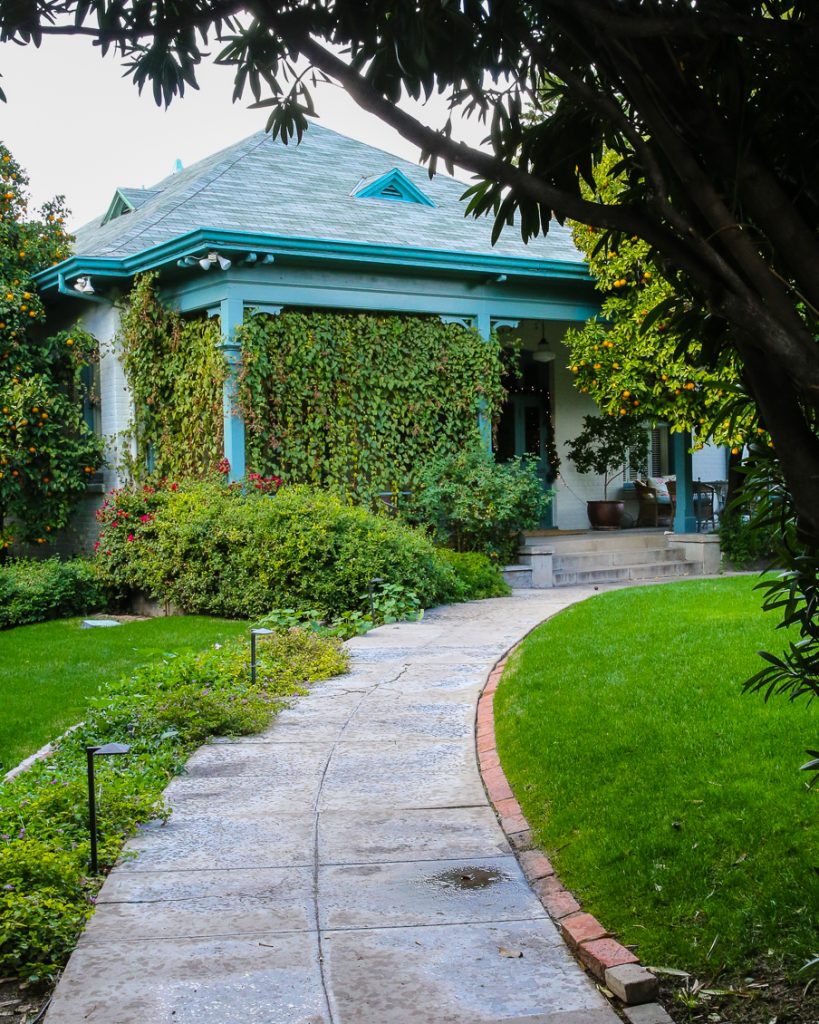
Content Sources
https://explorationvacation.net/2014/06/historic-tucson-arizona-the-mansions-of-main-avenue/
https://www.tucsonaz.gov/files/preservation/ths_map_fp_sm.pdf
http://www.downtowntucson.org/wp-content/uploads/2011/05/THS_map_FP.pdf
Travel Blog ~ Past Tucson Links
